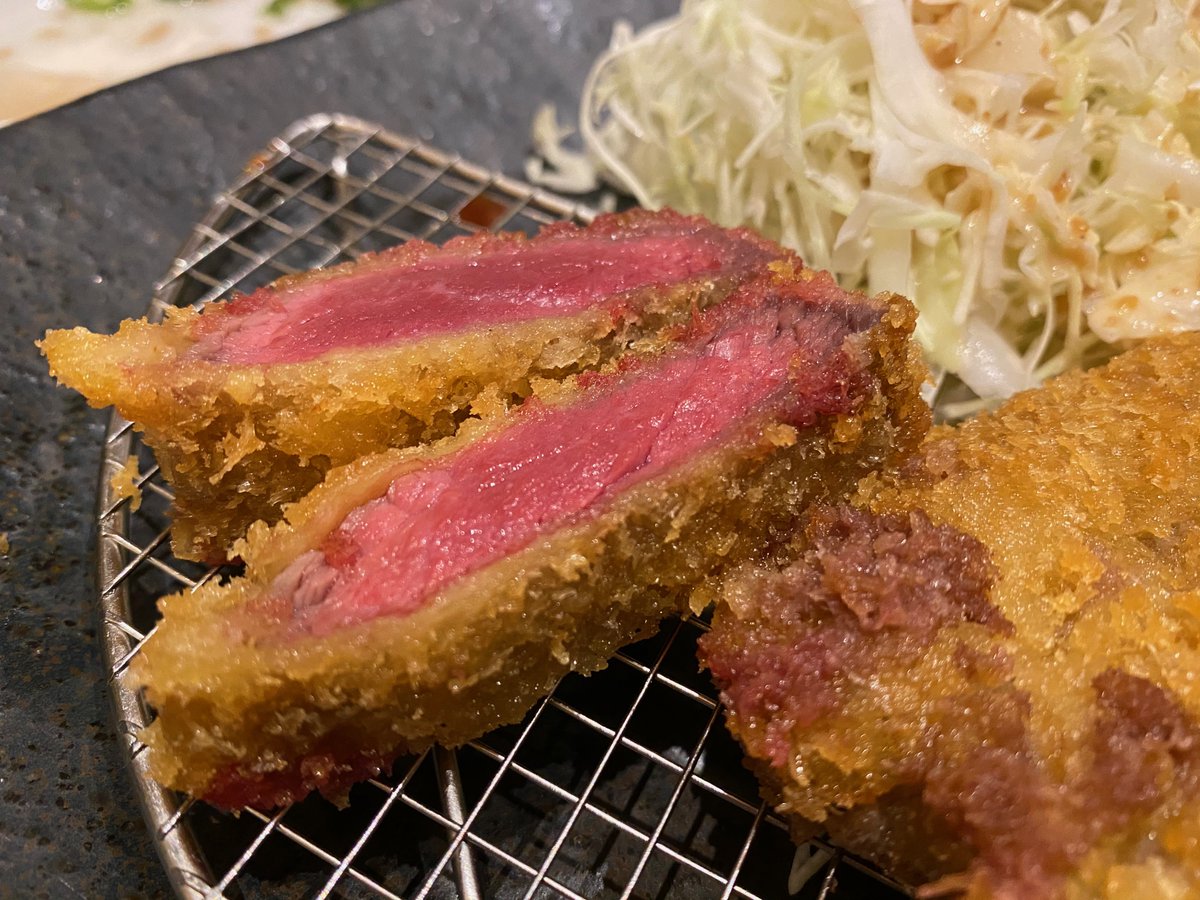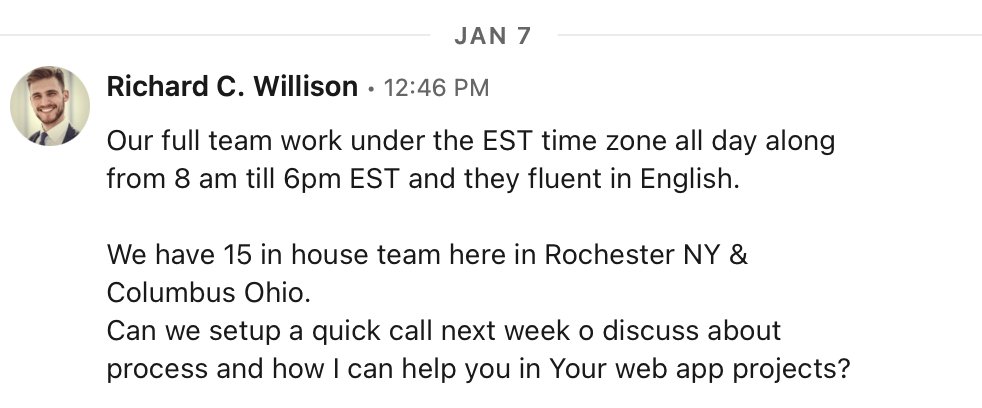Since getting back from Japan last month, I've been wanting to Get Back to Basics with Twitter and just post an endless stream of food pics. So here: have a thread of great and/or weird food highlights from our year in Japan 🍔🍣
First up, Japanese curry. Great with a pork cutlet, with veggies, with udon noodles, with a gigantic block of cheese. Hard to screw up 



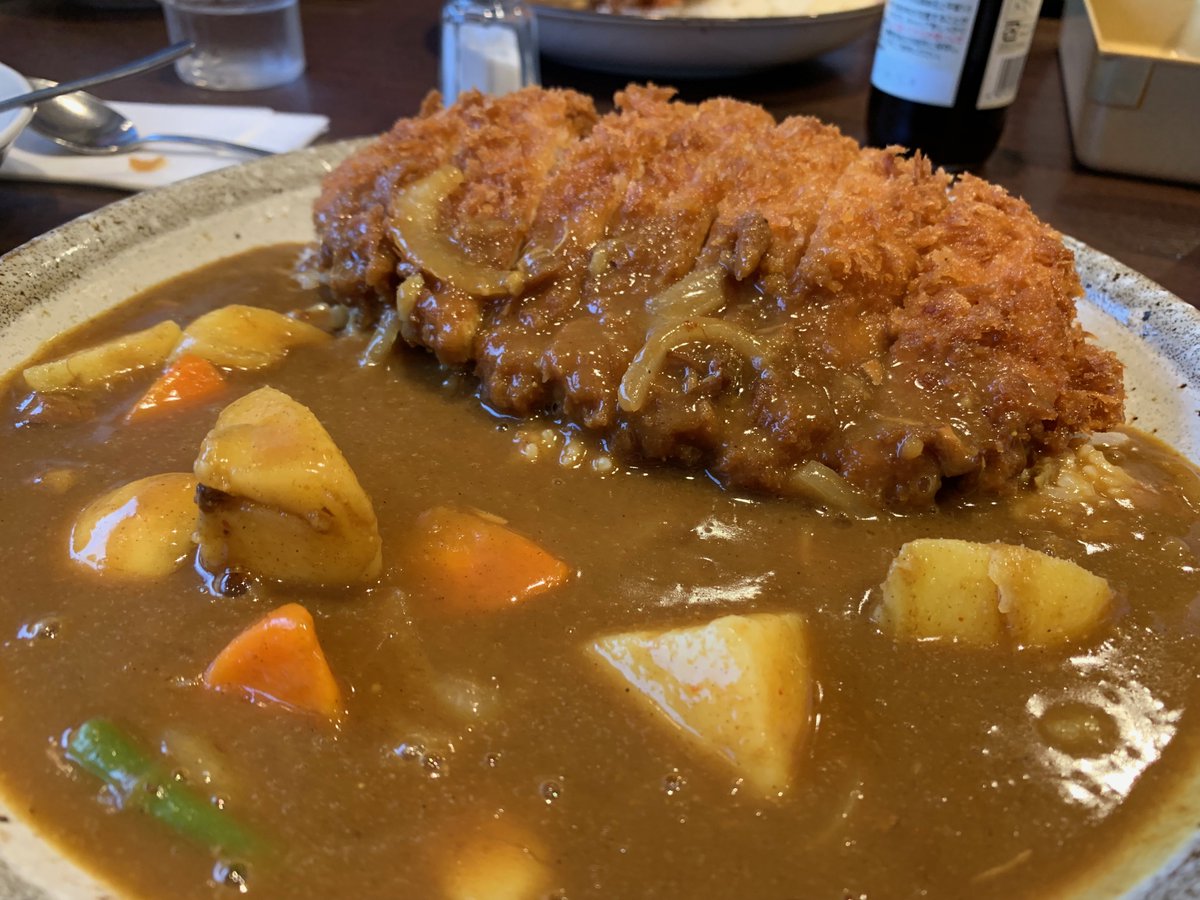

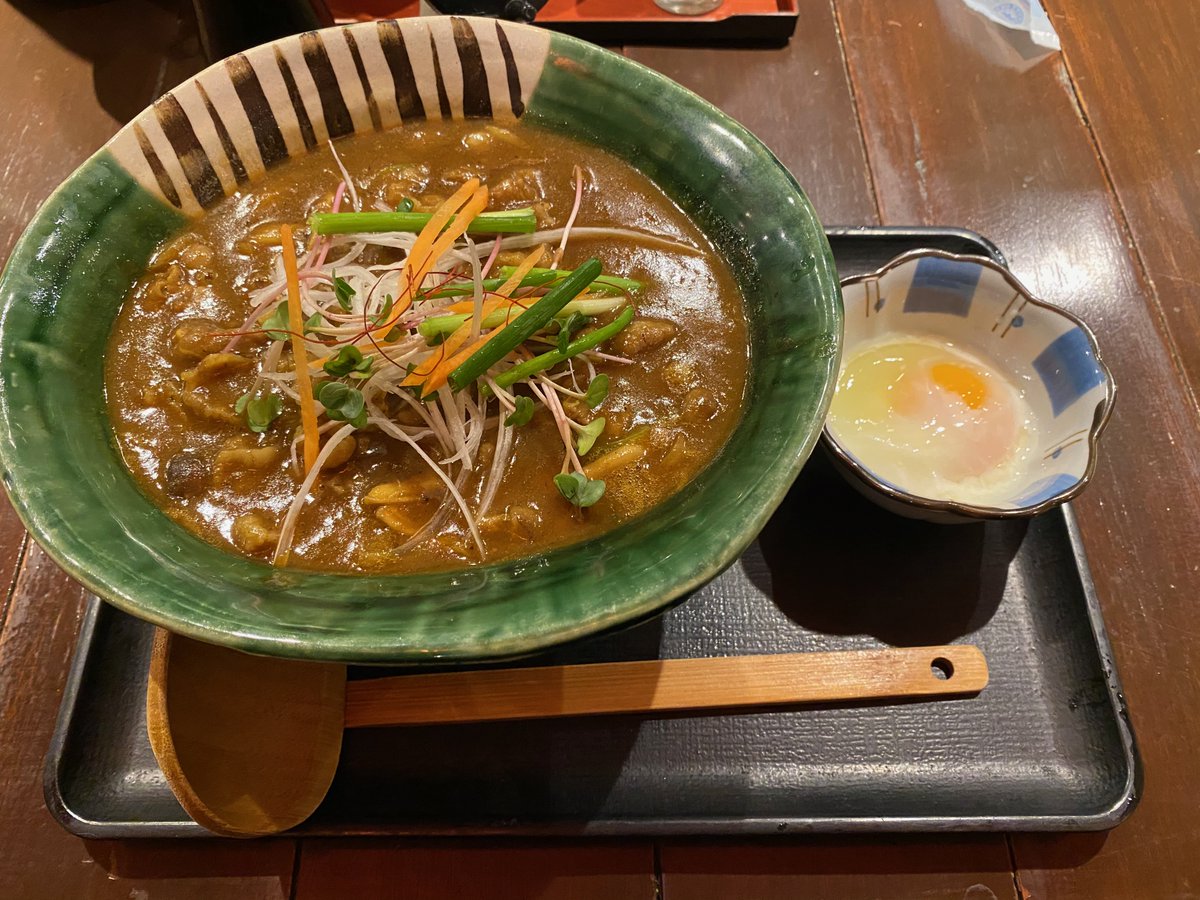

My favorite ramen by far is tonkotsu. Something about carefully-tending pork stock for multiple days always turns out. I'm also a fan of the recent ramen shop trend to crisp up gyoza with "wings" of excess batter before flipping them 




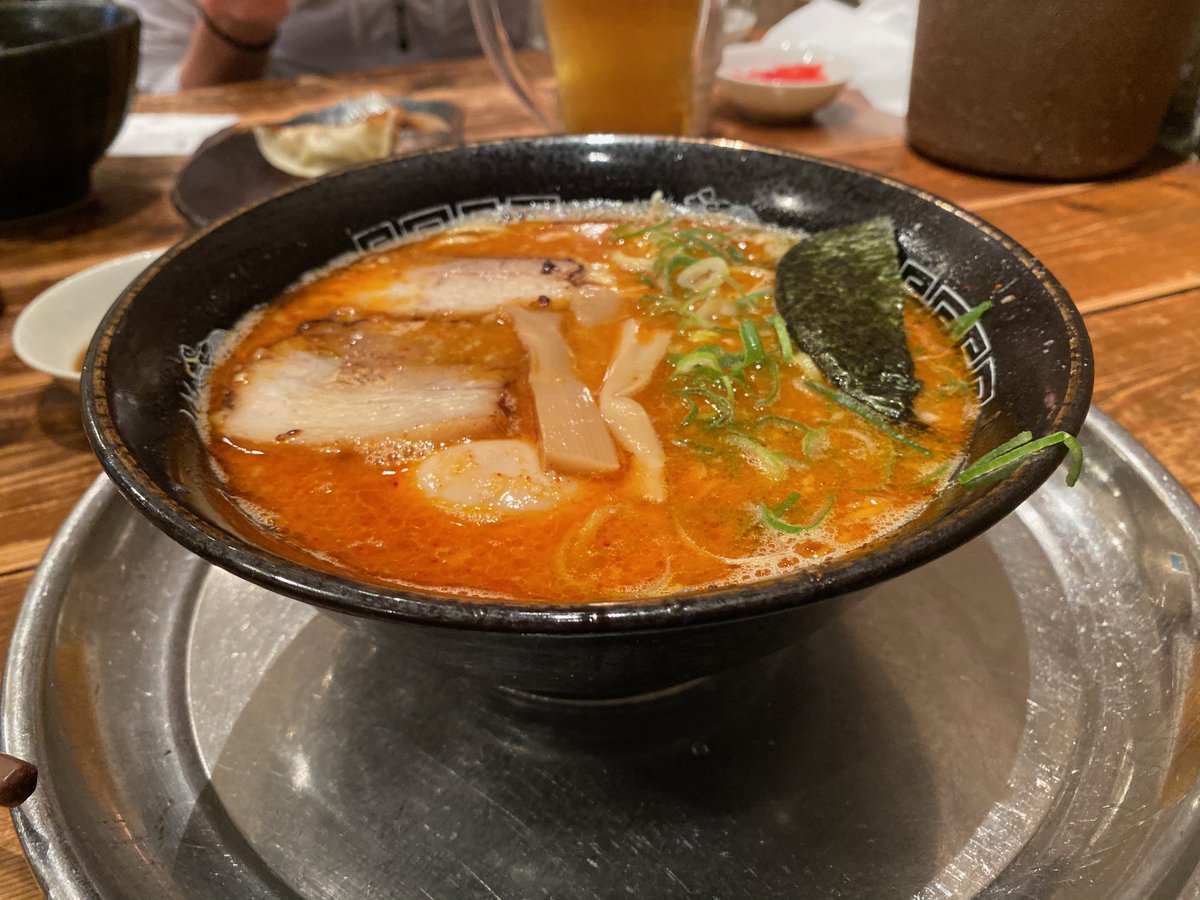

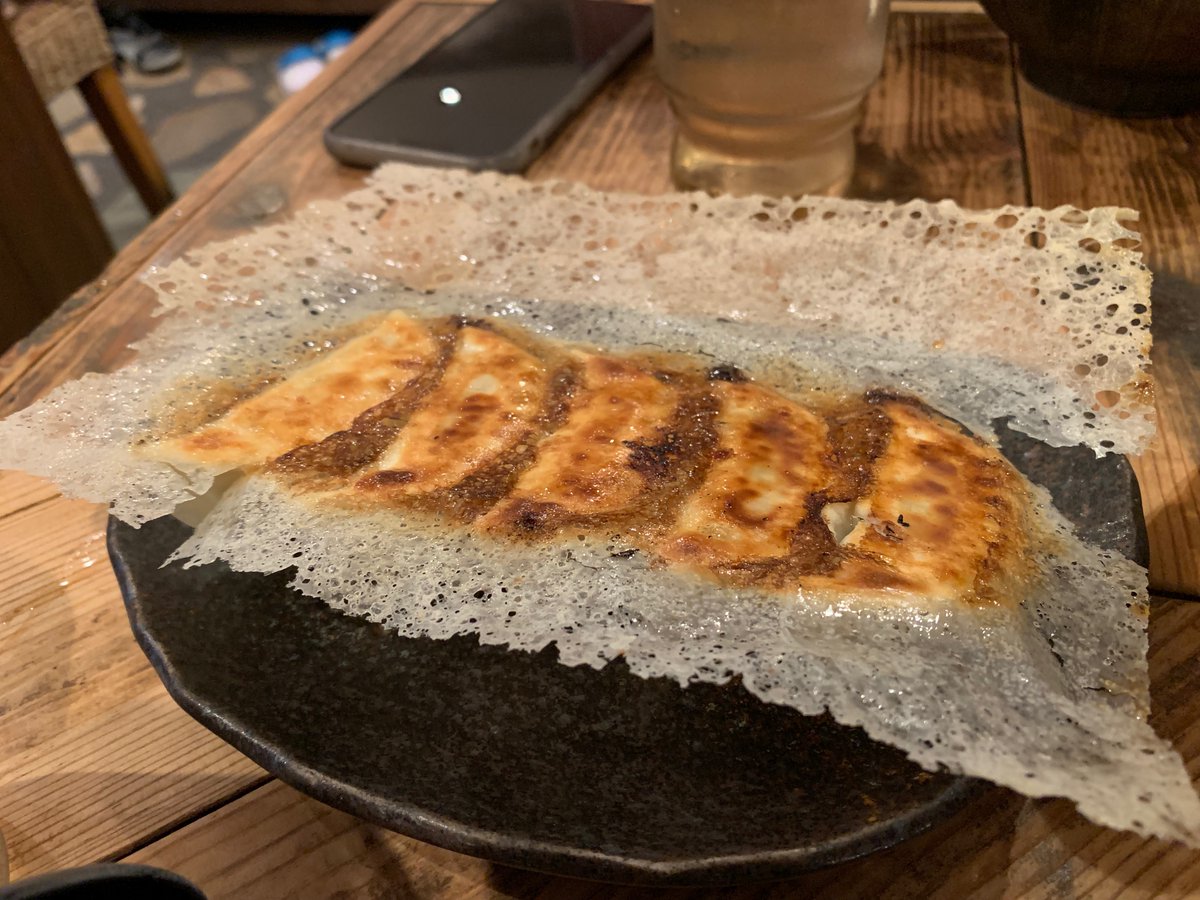
When I first visited Japan in 2005, I couldn't find a good slice of pizza in six months of searching. Now they've mastered both ends of the spectrum. Some of the best wood-fired pizza I've ever had while still making room for weird stuff, like this crust packed with hot dogs 



Speaking of weird, the hyper-competitive landscape of canned cocktails produces some hilarious flavors. This year's highlights (in no particular order) were blueberry prune, kale, strawberry pocky, and yakult probiotic yogurt drink 



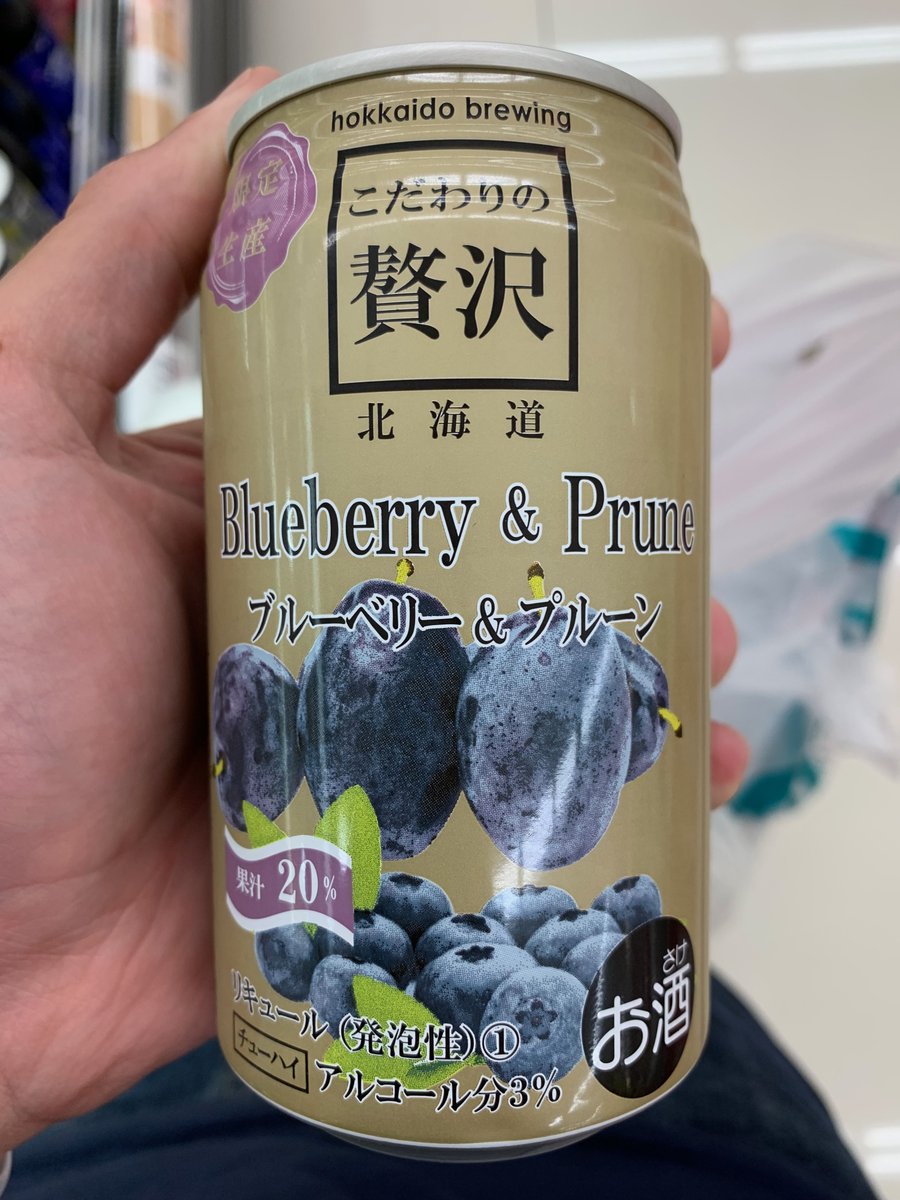



There's an entire genre of "cook it yourself" restaurants that I can't get enough of. One is kushi katsu (fried food on sticks) where you get YOUR OWN DEEP FRYER at every table. Would result in so many lawsuits in the US. Plus all-you-can-fry in 70 minutes for $14 at our mall. 



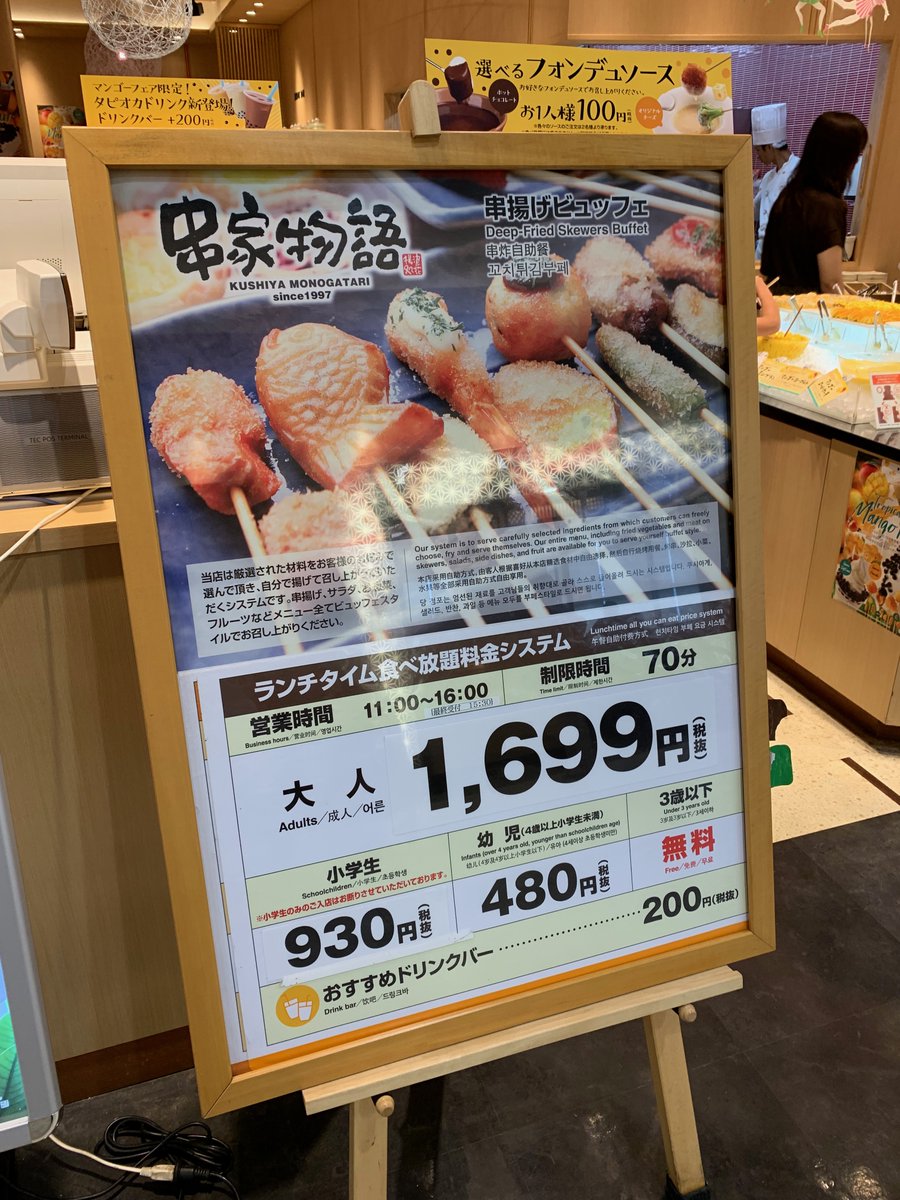



Another tradition that celebrates Japan's train culture is eki ben (station bento boxes) that are prepared daily and sold at every major station, often paired with day-drinking on shinkansen bullet trains 



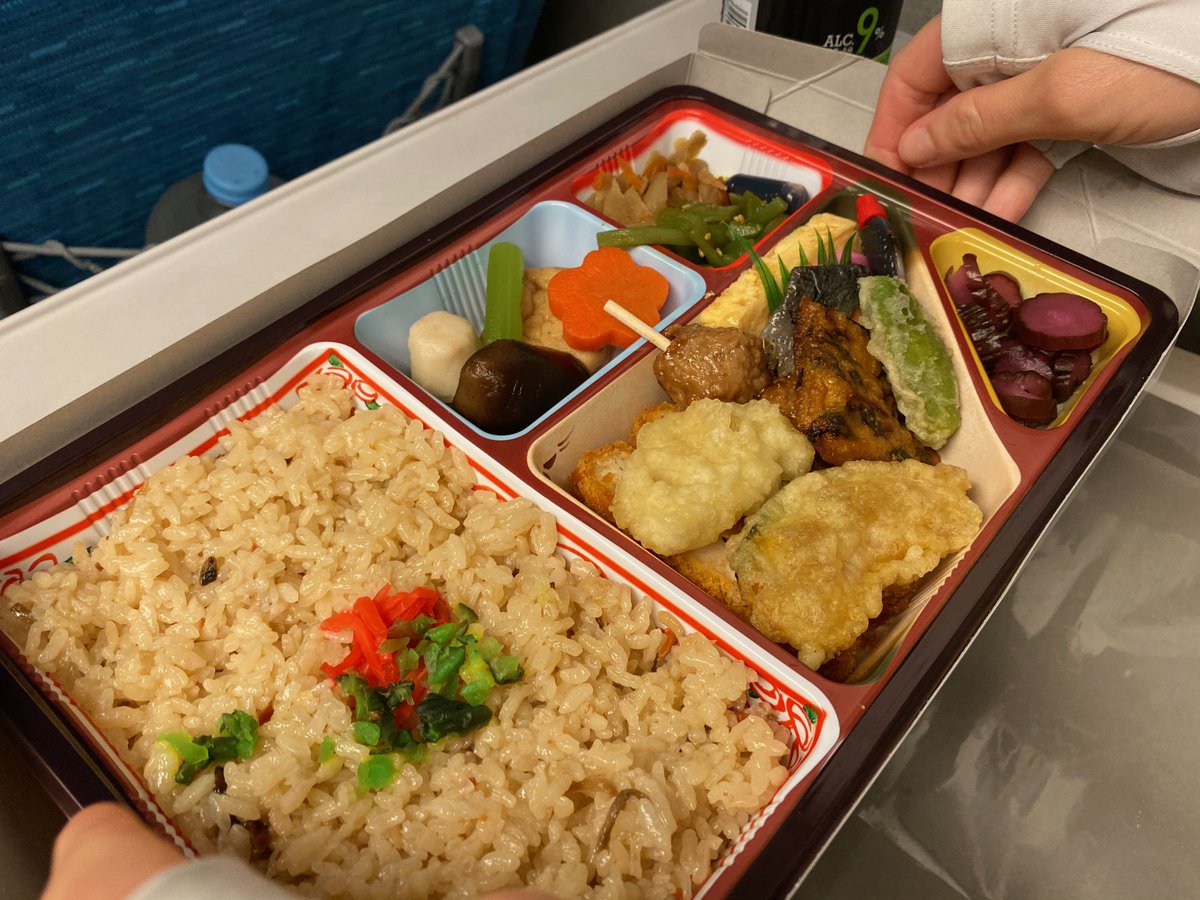
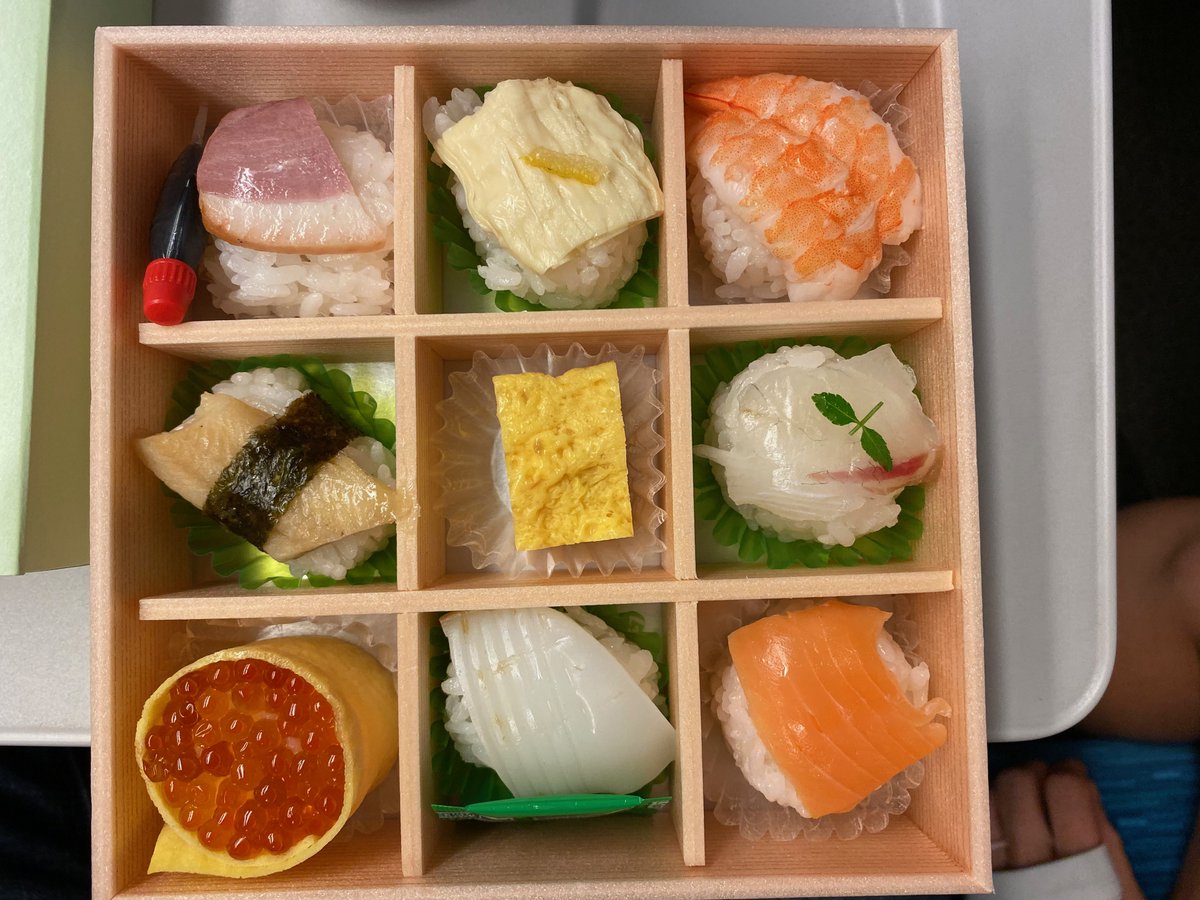
I'm not much of a sandwich person, but I can't get enough of Japanese egg sandwiches, whether from 7-11 or a high-end cafe. They're somewhere between a perfectly-crafted omelette and a just-right egg salad 



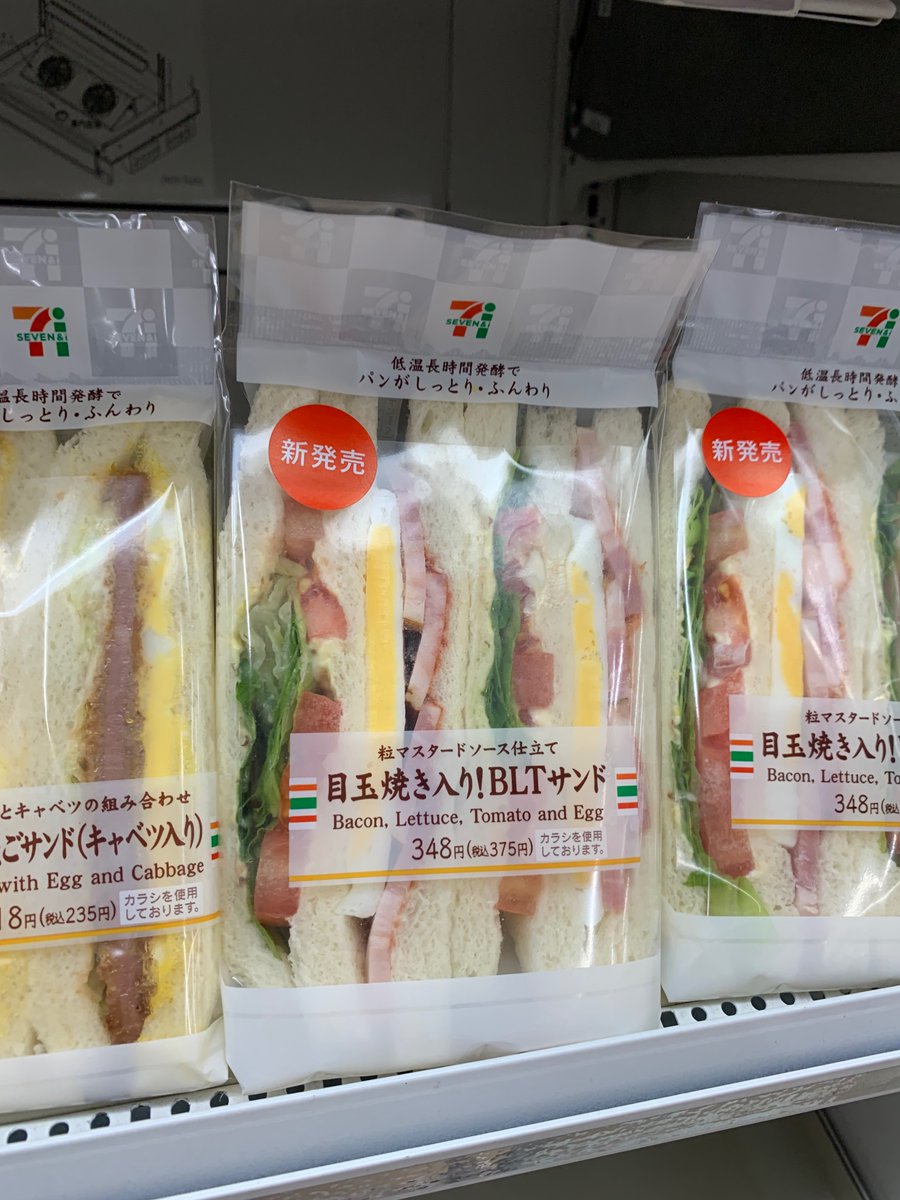


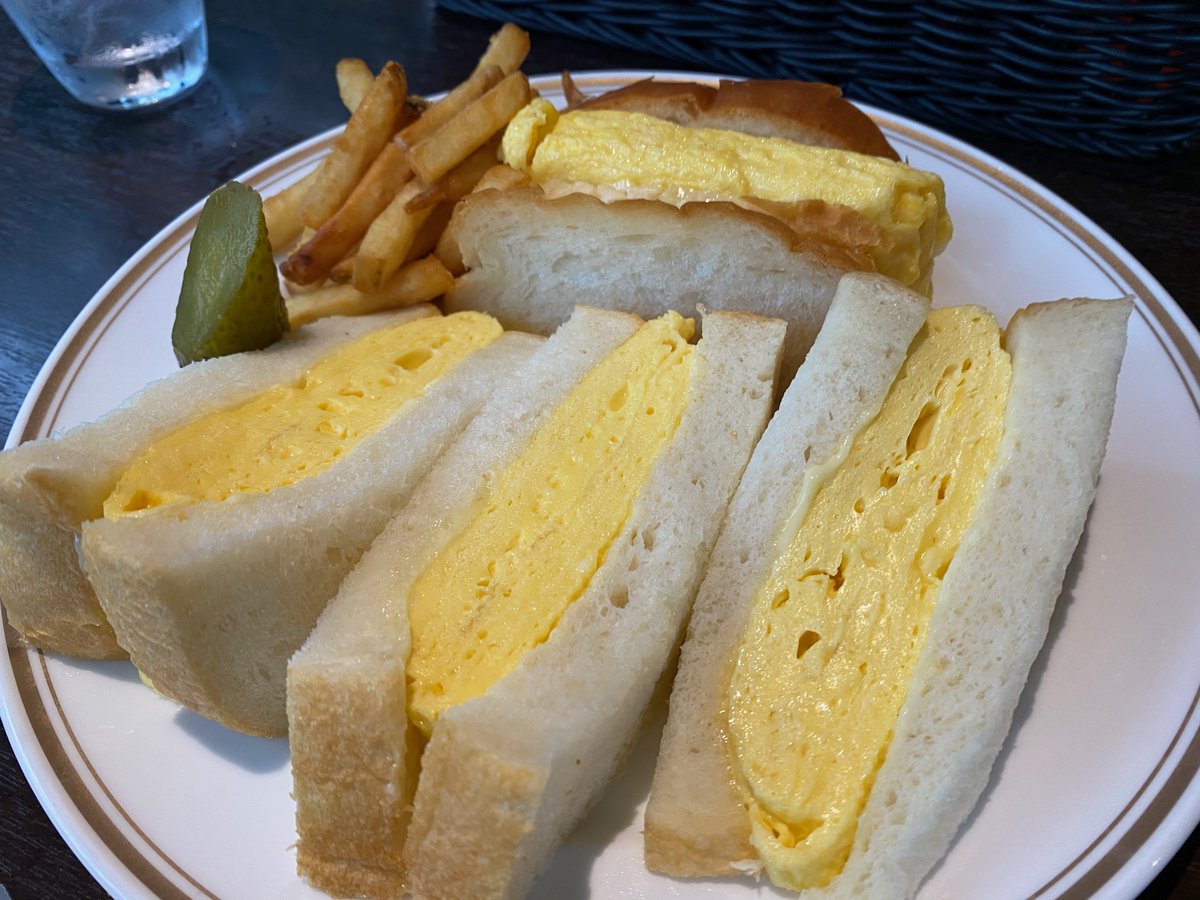
My favorite low-carb bar food is definitely yakitori (chicken on sticks) and yakiton (sub chicken for pork). The only downside is that my weak American stomach is no match for often-slightly-undercooked poultry so it's a bit of a dice roll 





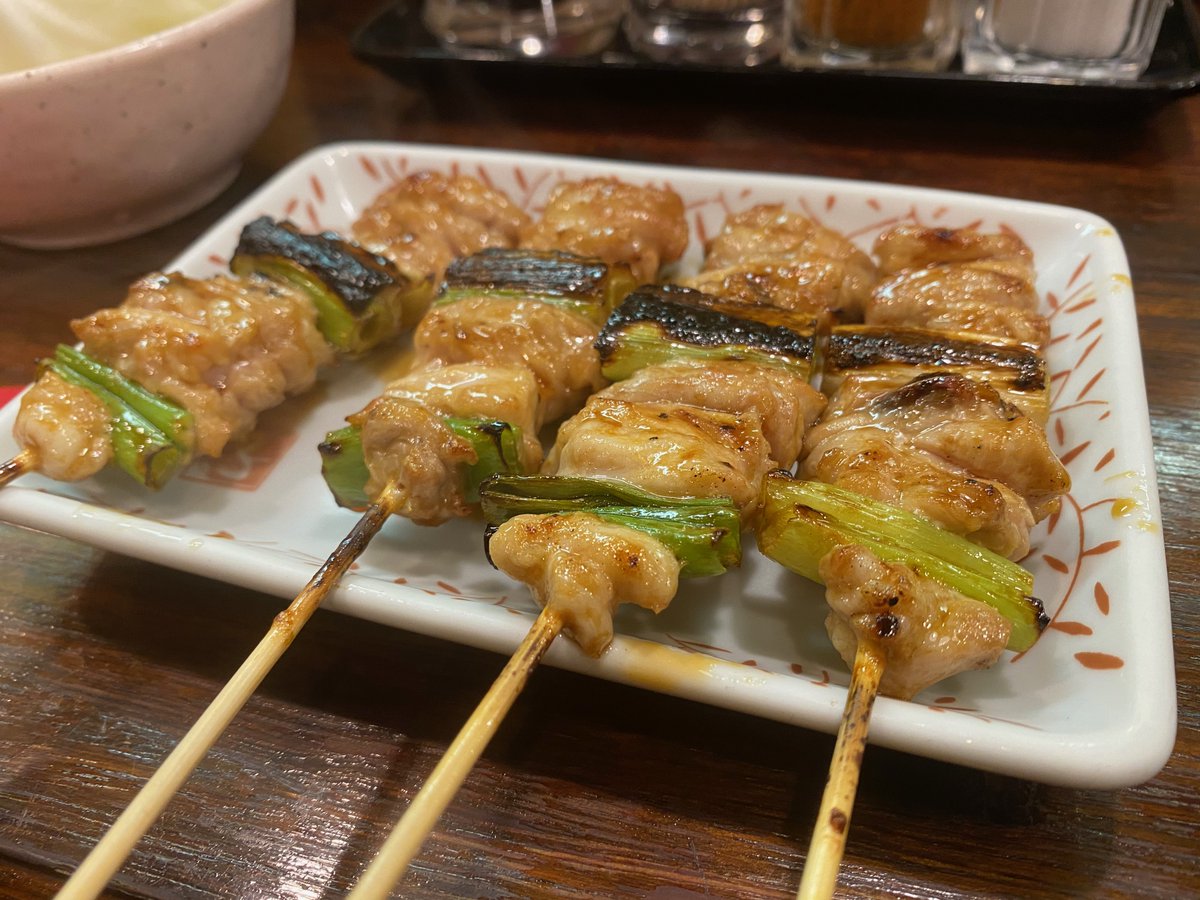
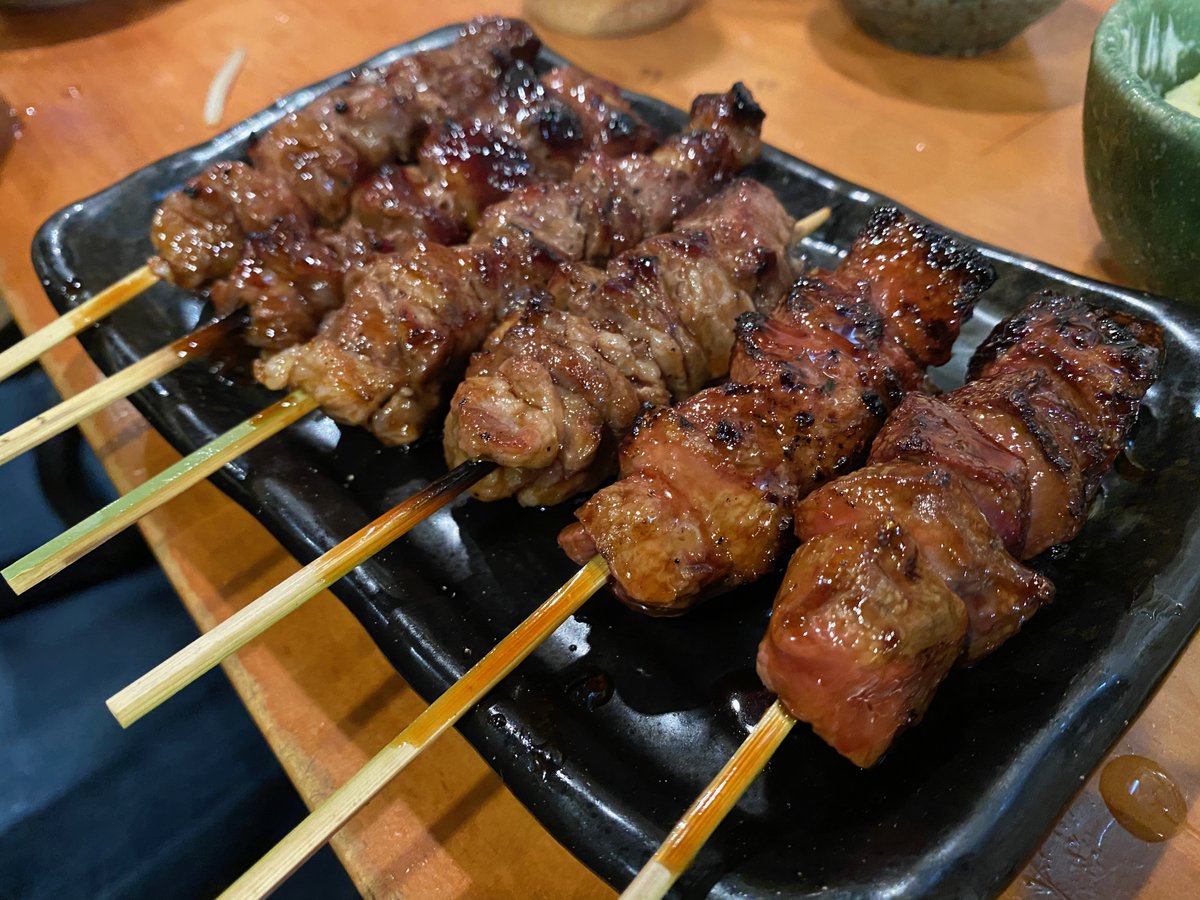
Speaking of bars and dice, an izakaya game that's always fun is chinchiro (dice) highball. At this bar, roll an even number you get a normal highball. An odd number gets you a mega-highball (at a higher price) and 3-of-a-kind gets you a giga-highball (at a low price). 

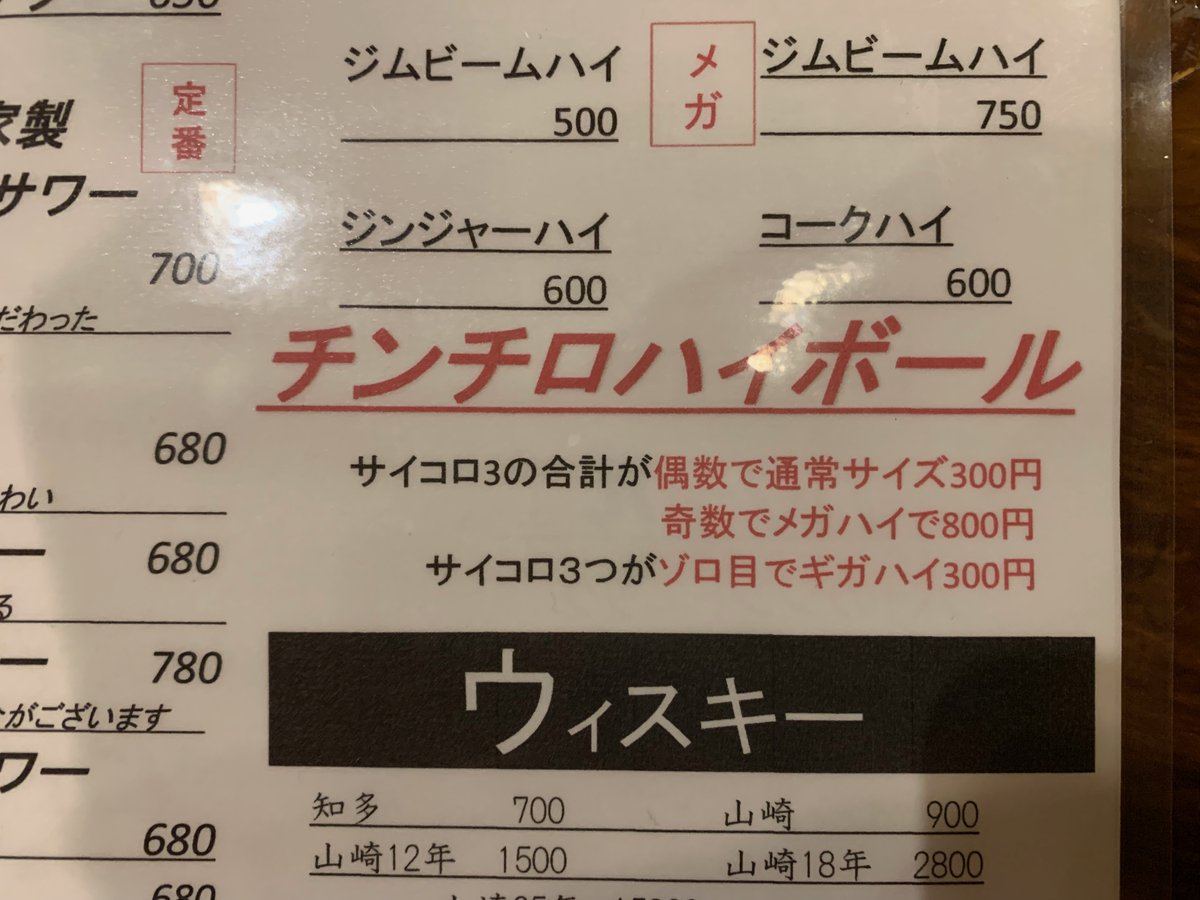
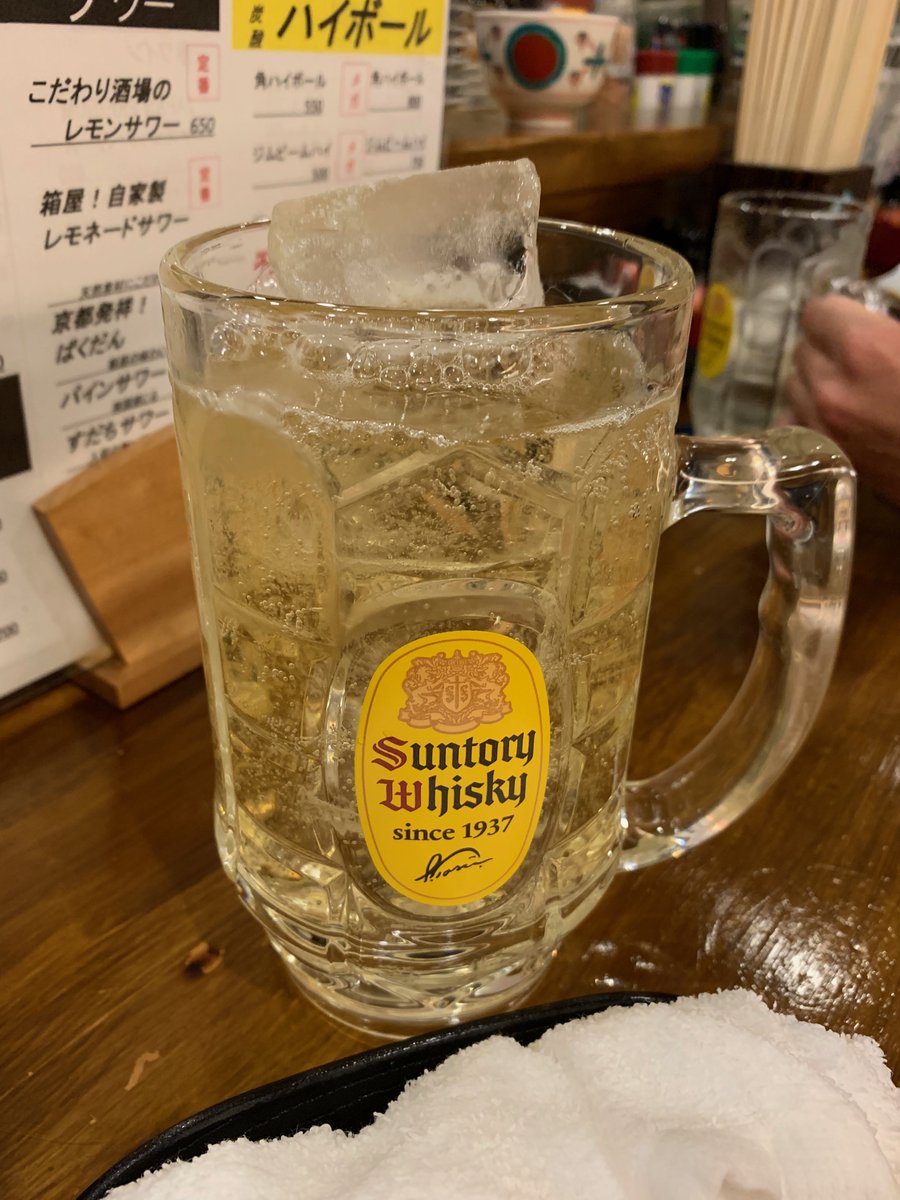
American food is often higher quality in Japan than it is in America. Great ingredients, careful prep, served piping hot. Here are four burgers that are better than any burger I've ever eaten in the states but none of them cost more than $6. 




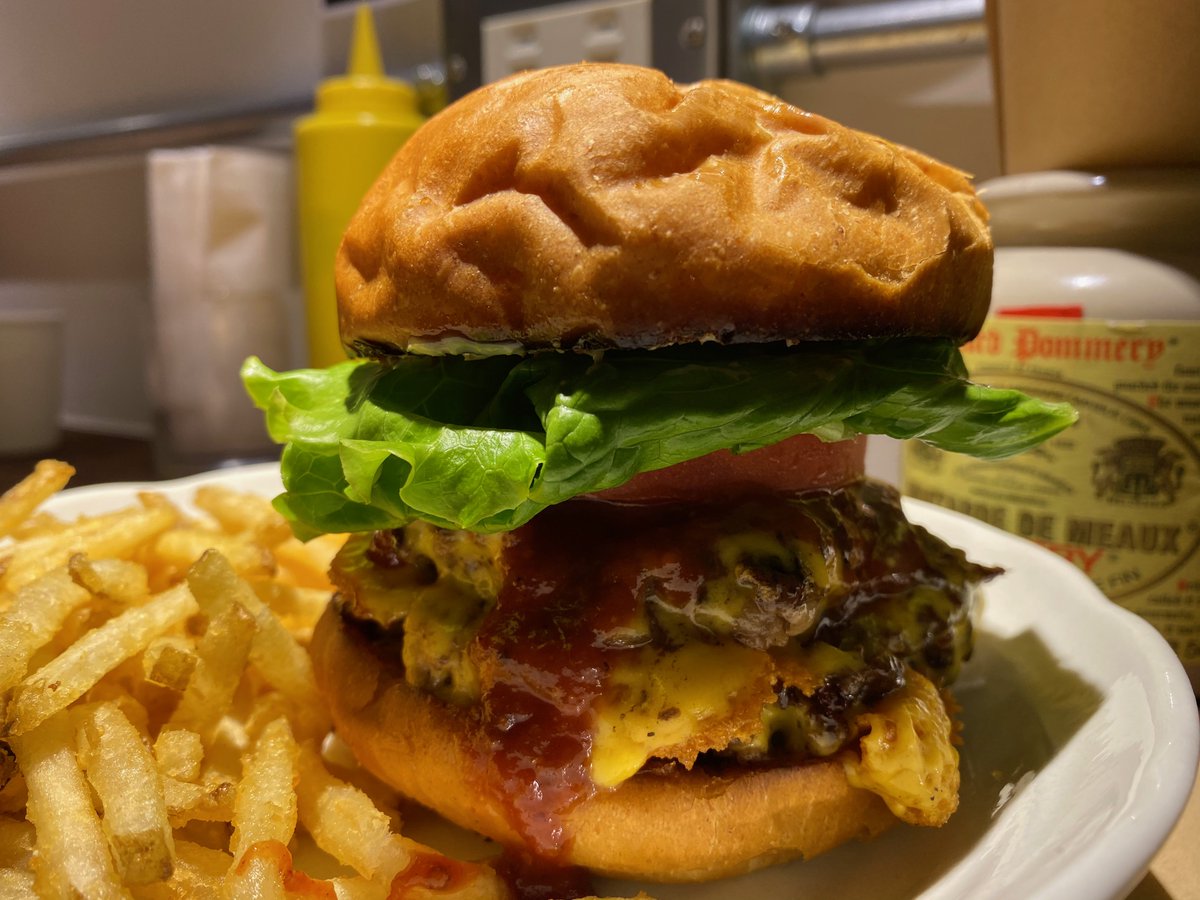
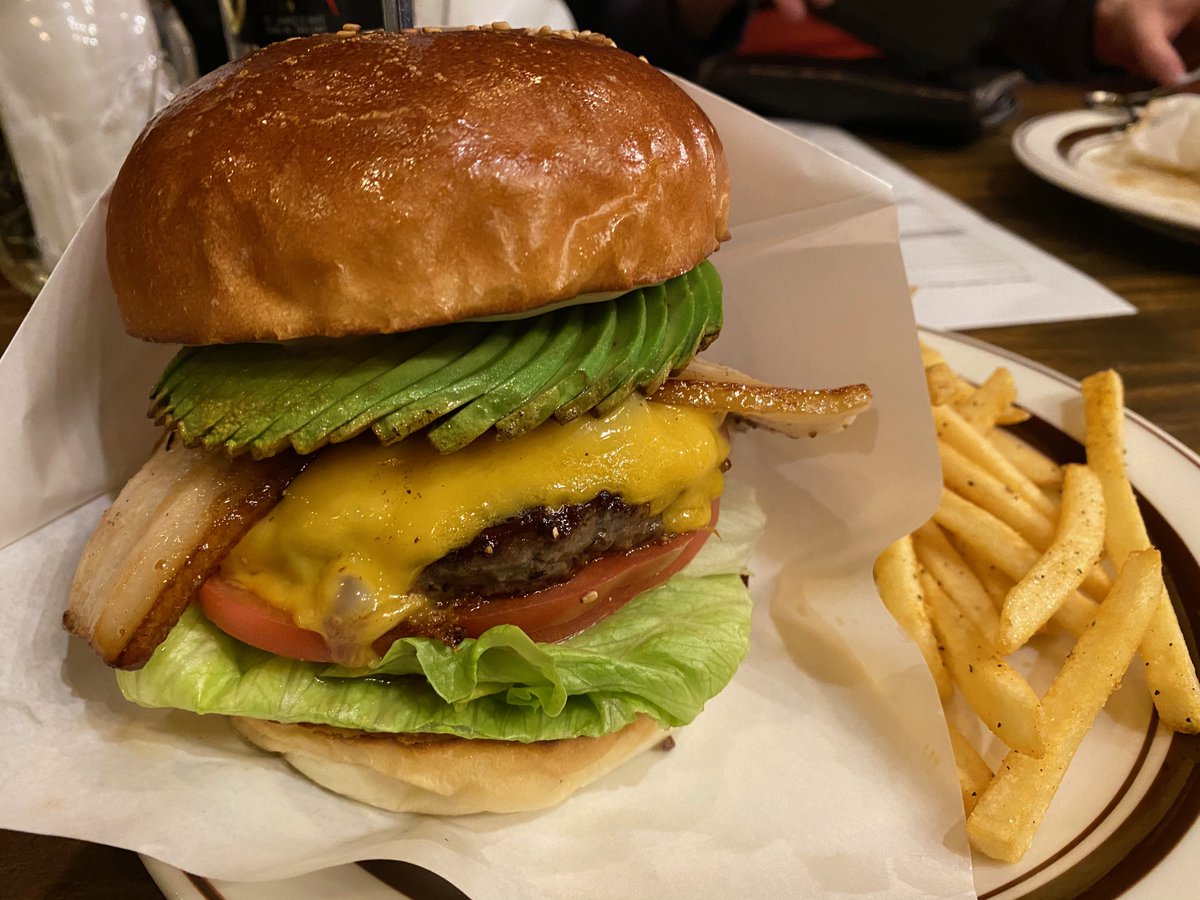

I should mention that the fries are also great, whether served on a conveyer belt at a discount sushi place or from a "long potato". Seriously each of those fries was 9 or 10 inches and I am still confused as to how 

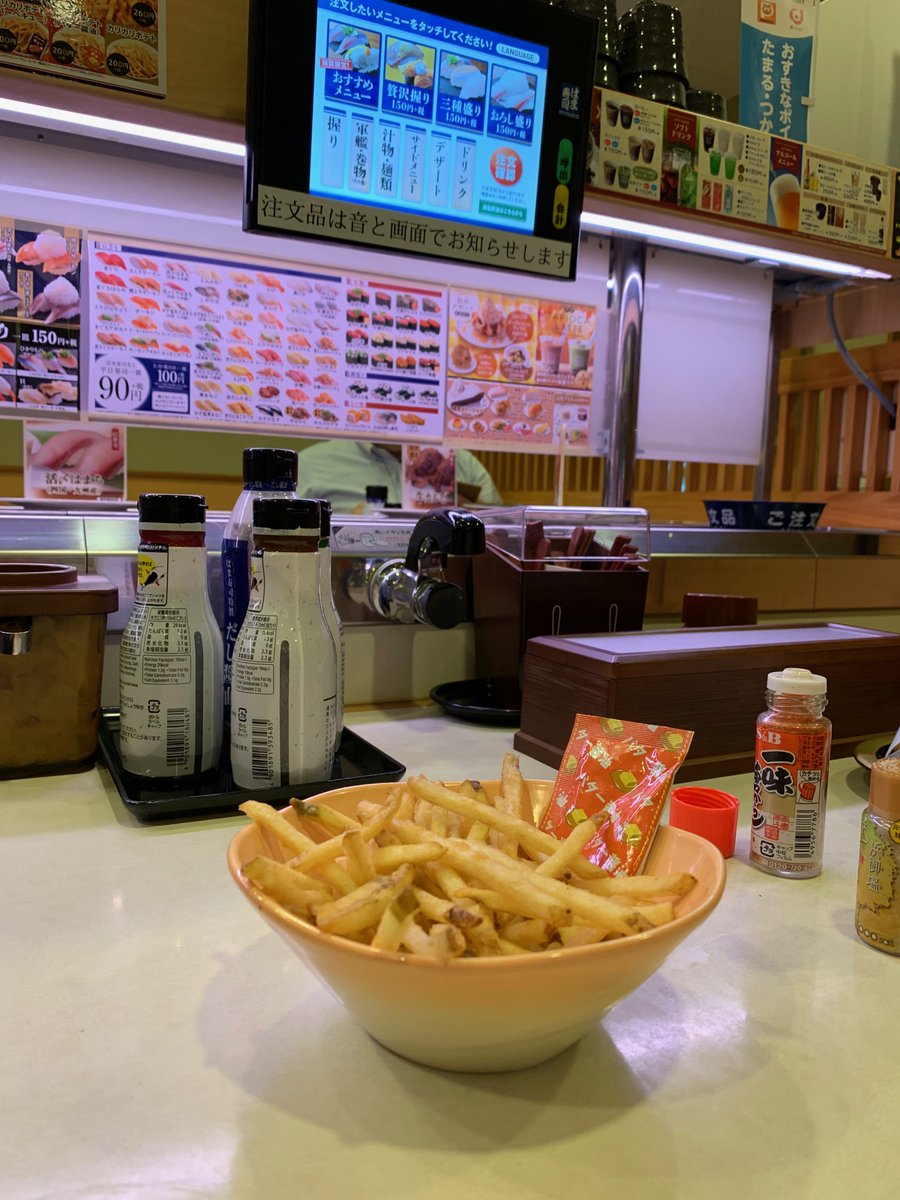
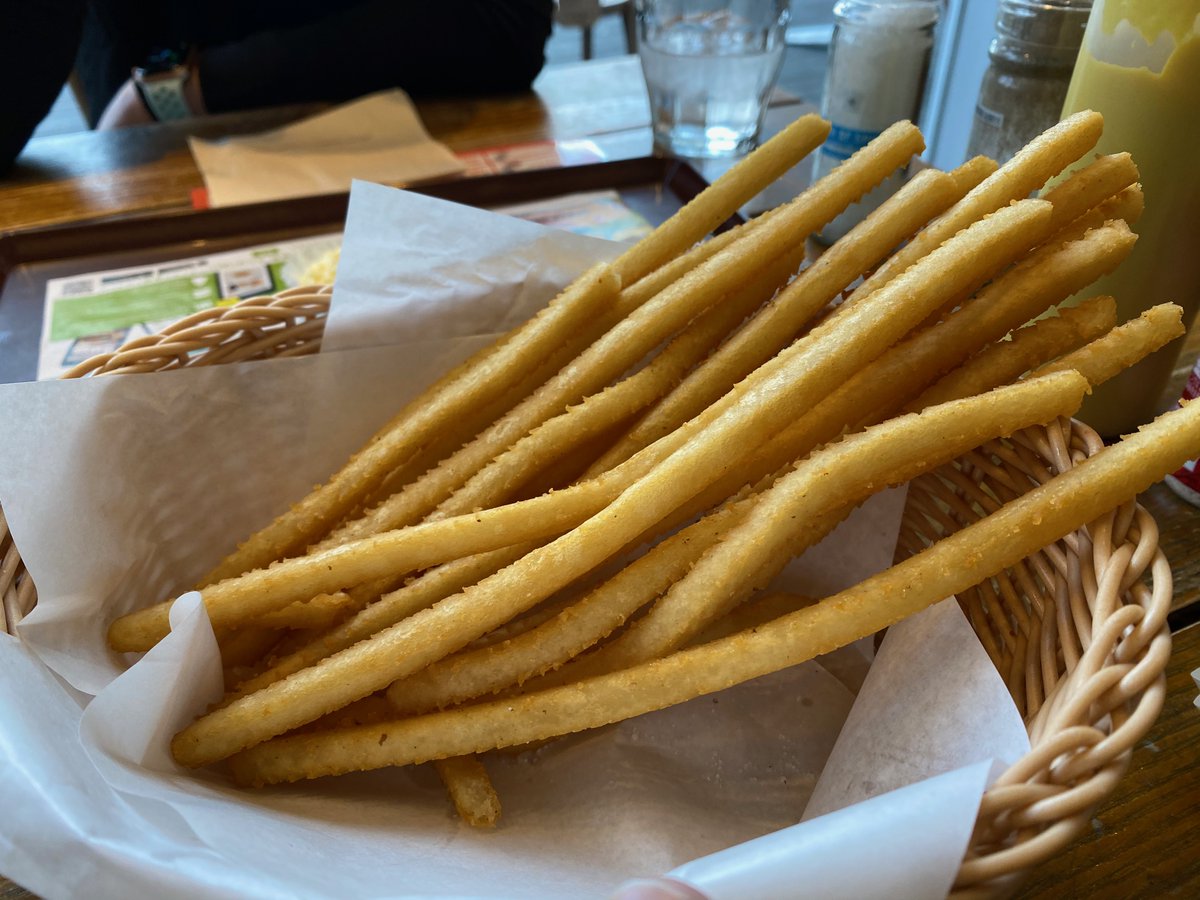
The integration of western ingredients in Japanese cuisine has resulted in what I guess you could call American Fusion dishes. One fan favorite is omuraisu (omelette rice), which is exactly what it sounds like 


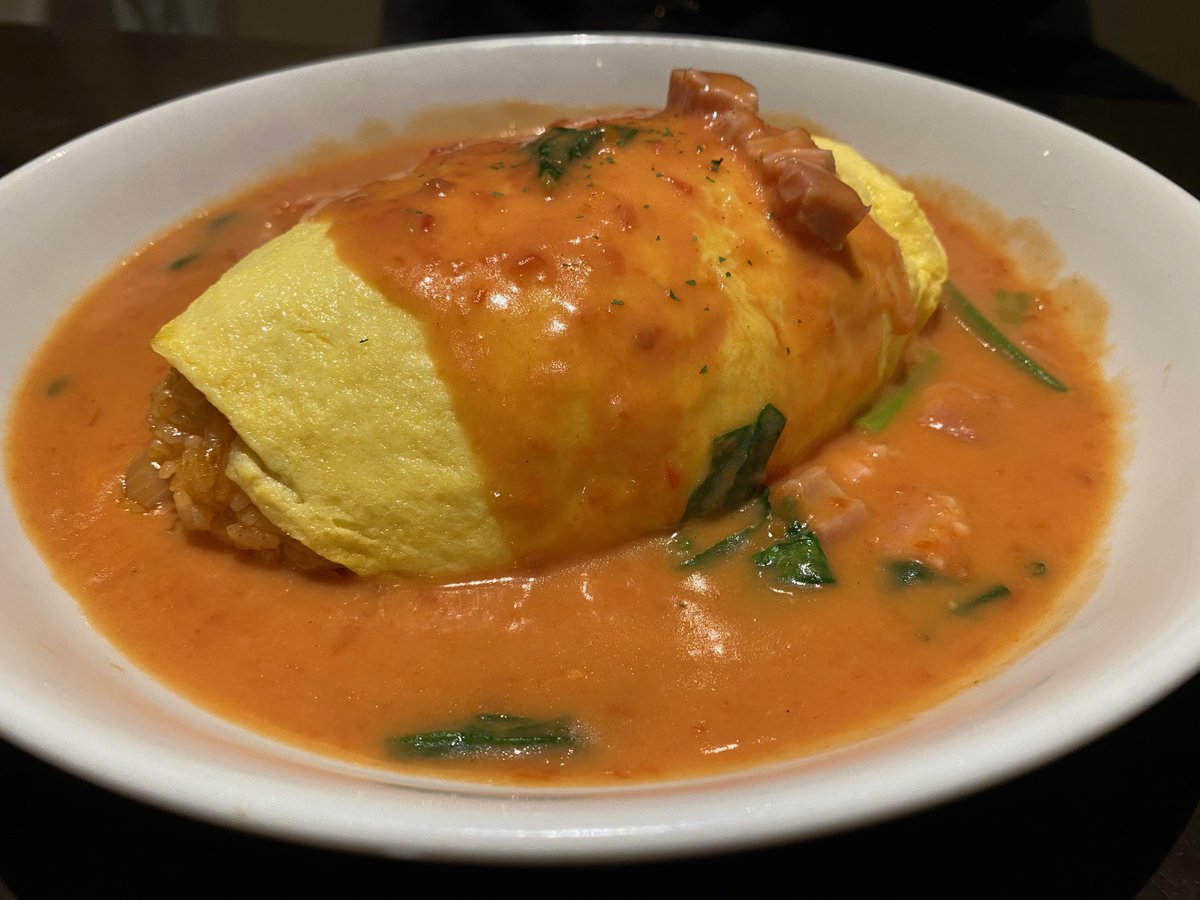
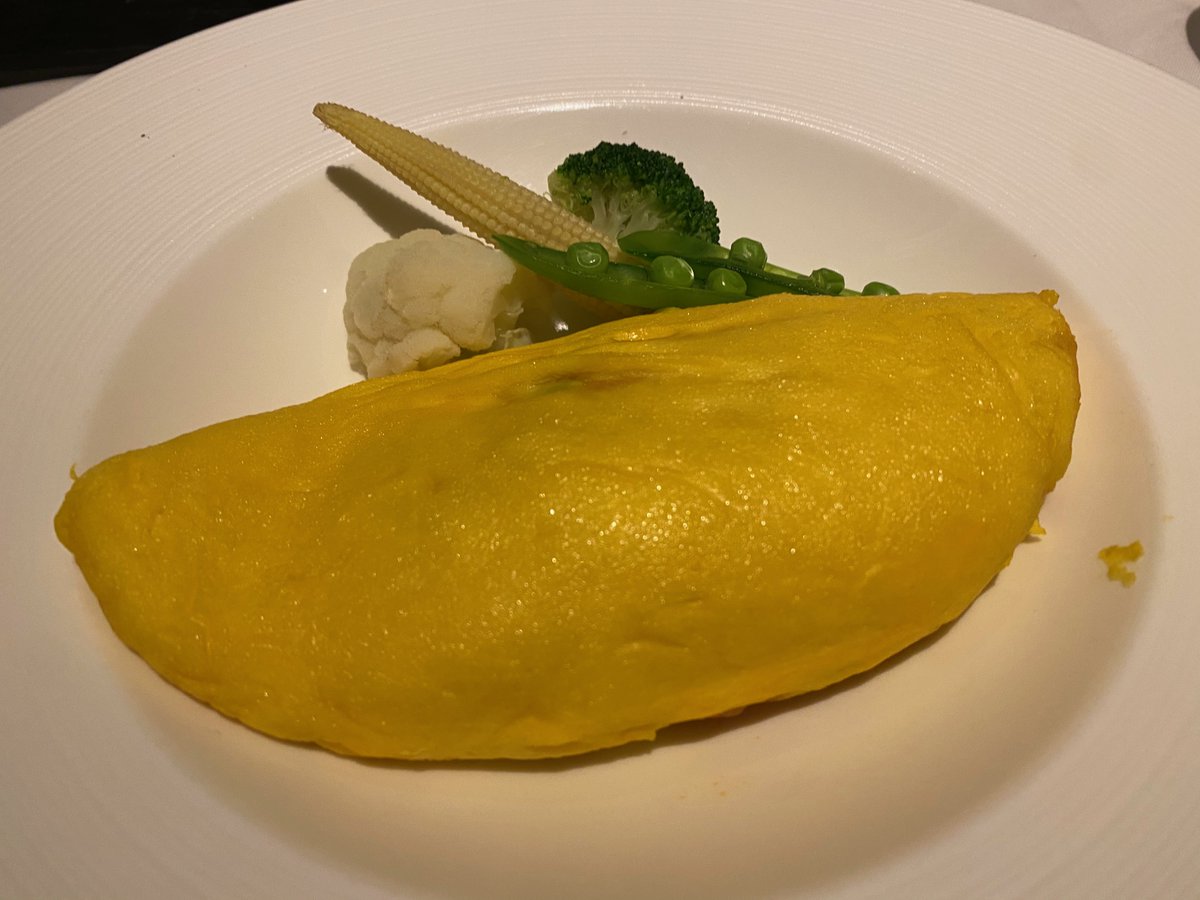
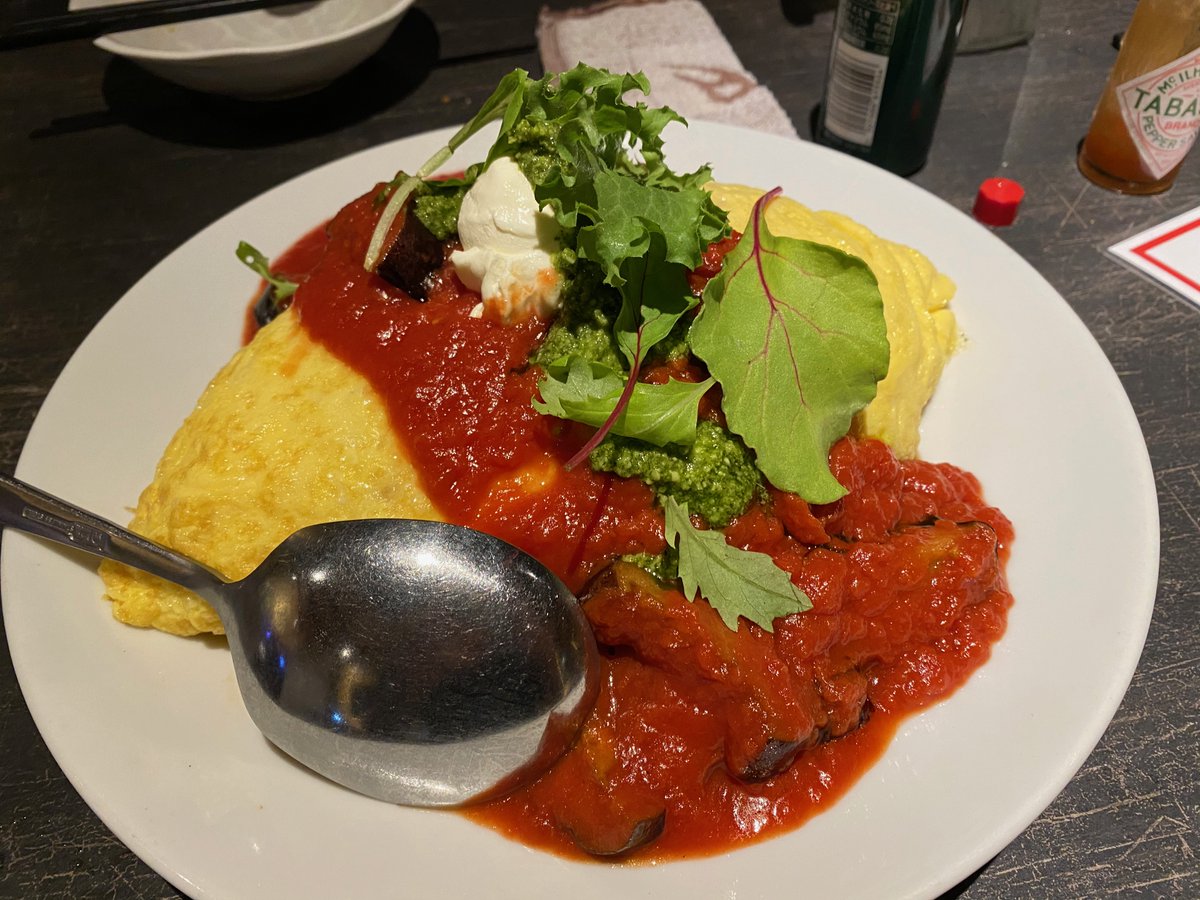
We had a chance to eat a few fancy kaiseki course dinners as well. This was an all-vegetarian meal in esteemed Buddhist monastery we stayed at atop Koya-san mountain 



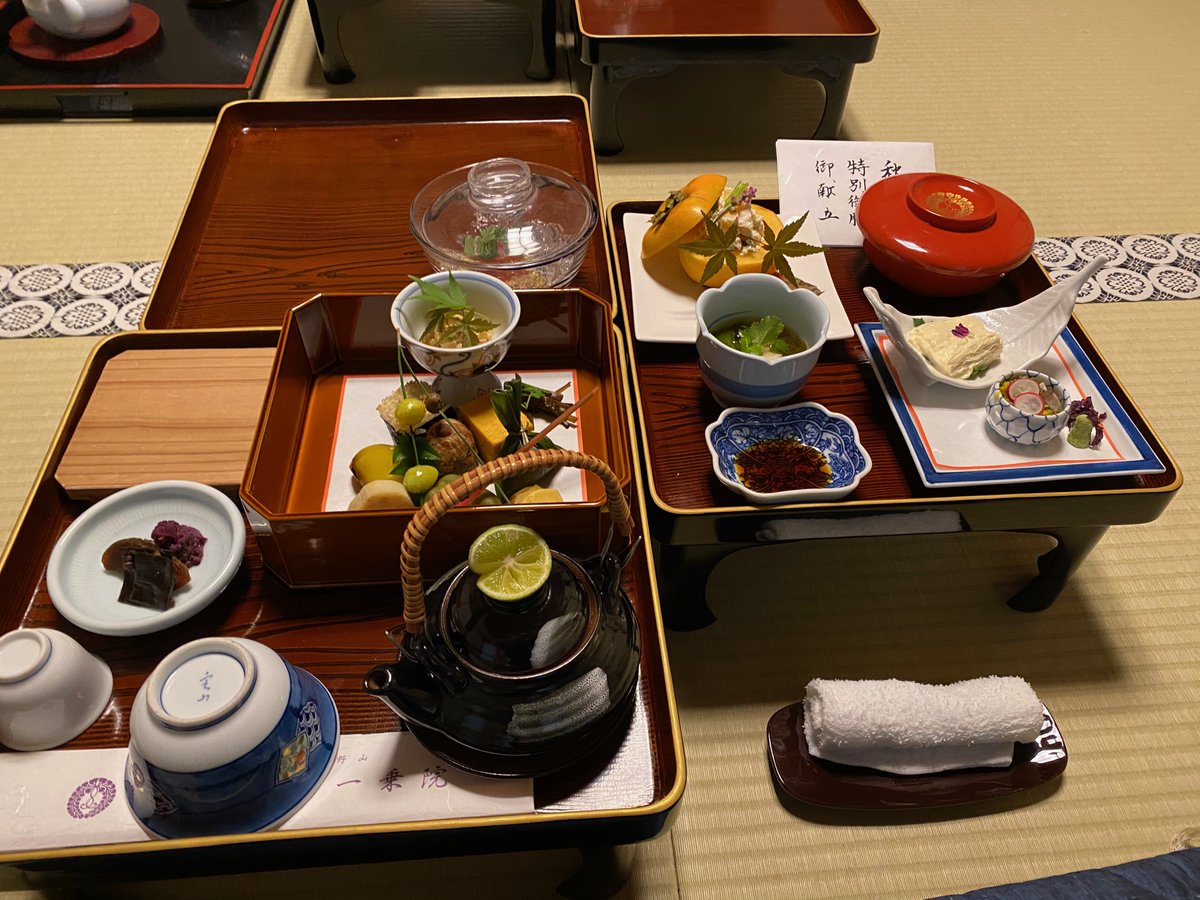
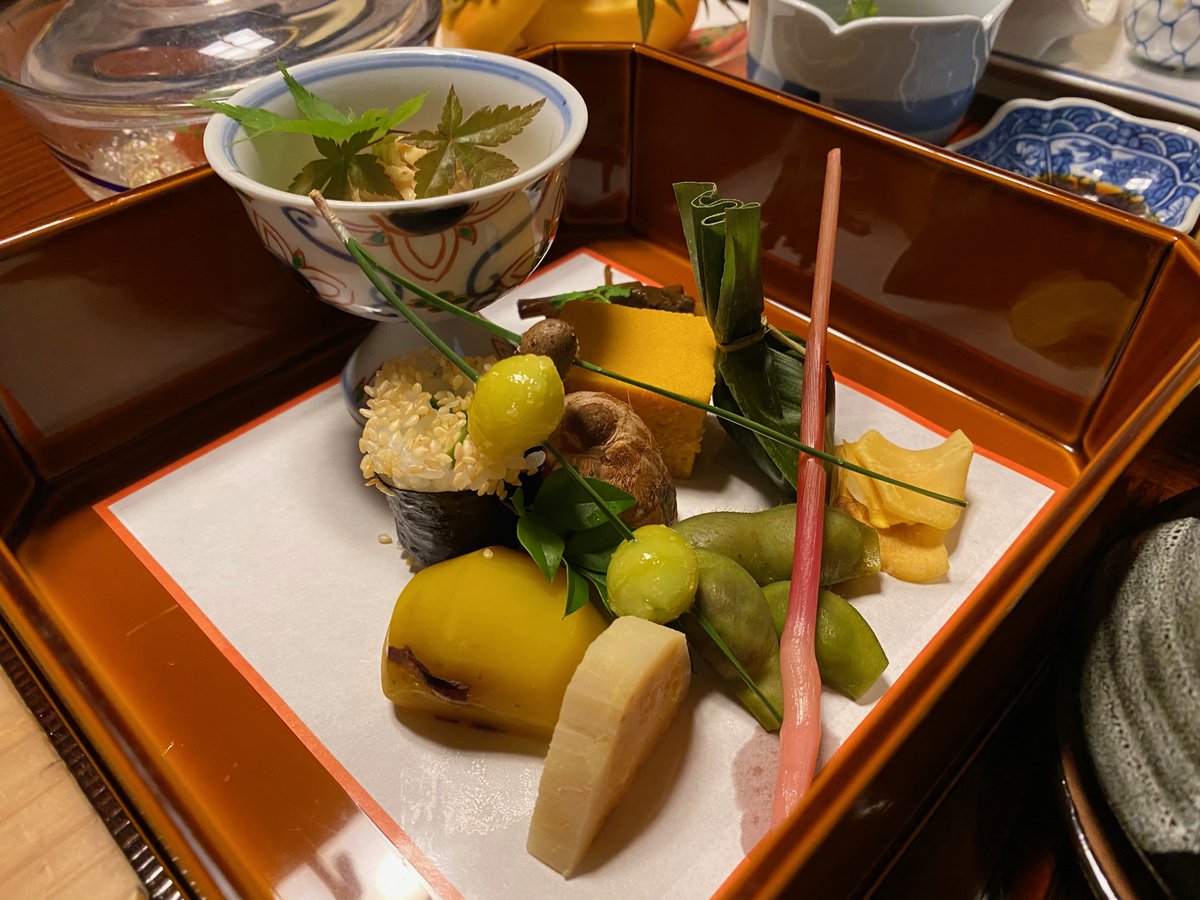


Back to junk food. There are so many seasonal and limited edition products. I saw Whity Latte exactly once. I only found a single ginger ale that could remind me that ginger looks disgusting. One Apple-flavored Coke. And only one 0cal Coke that came with a free 300cal hamburger 



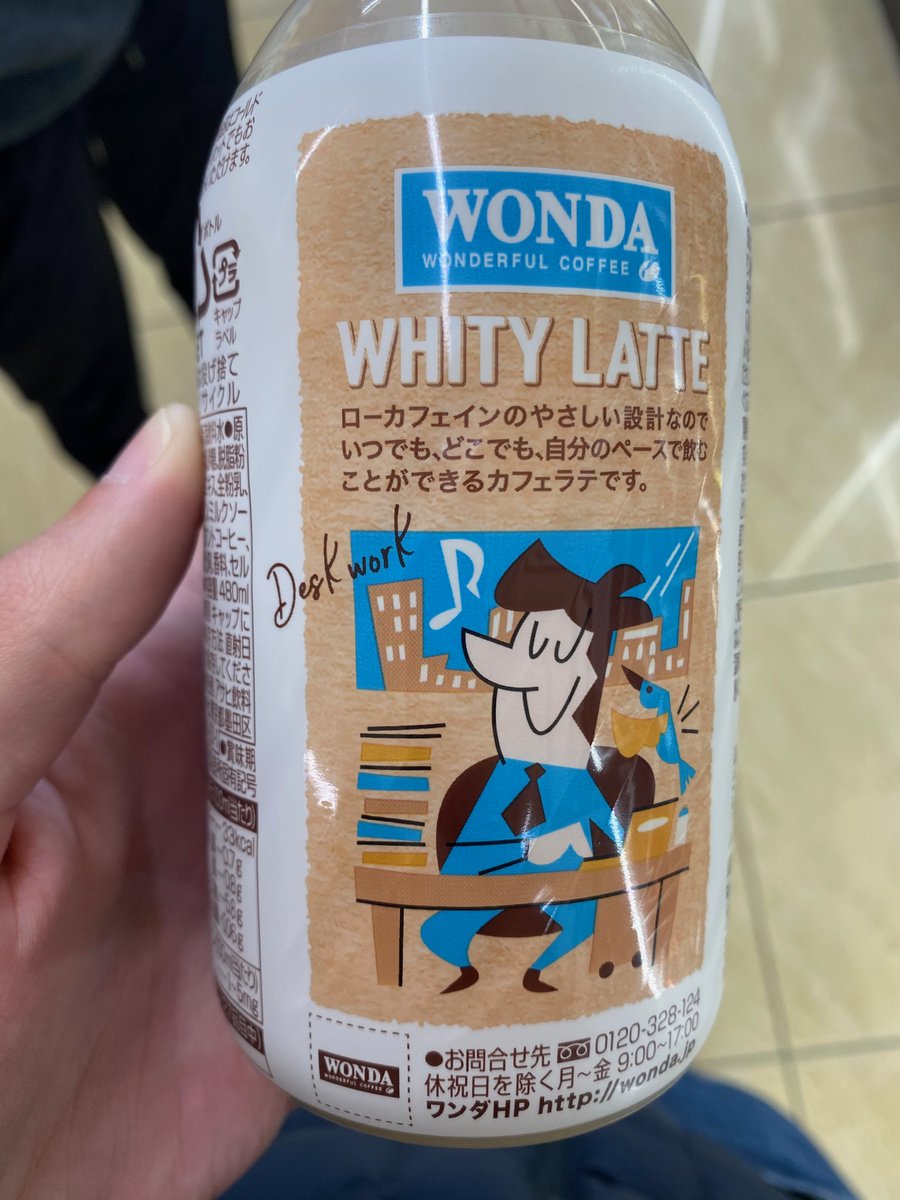
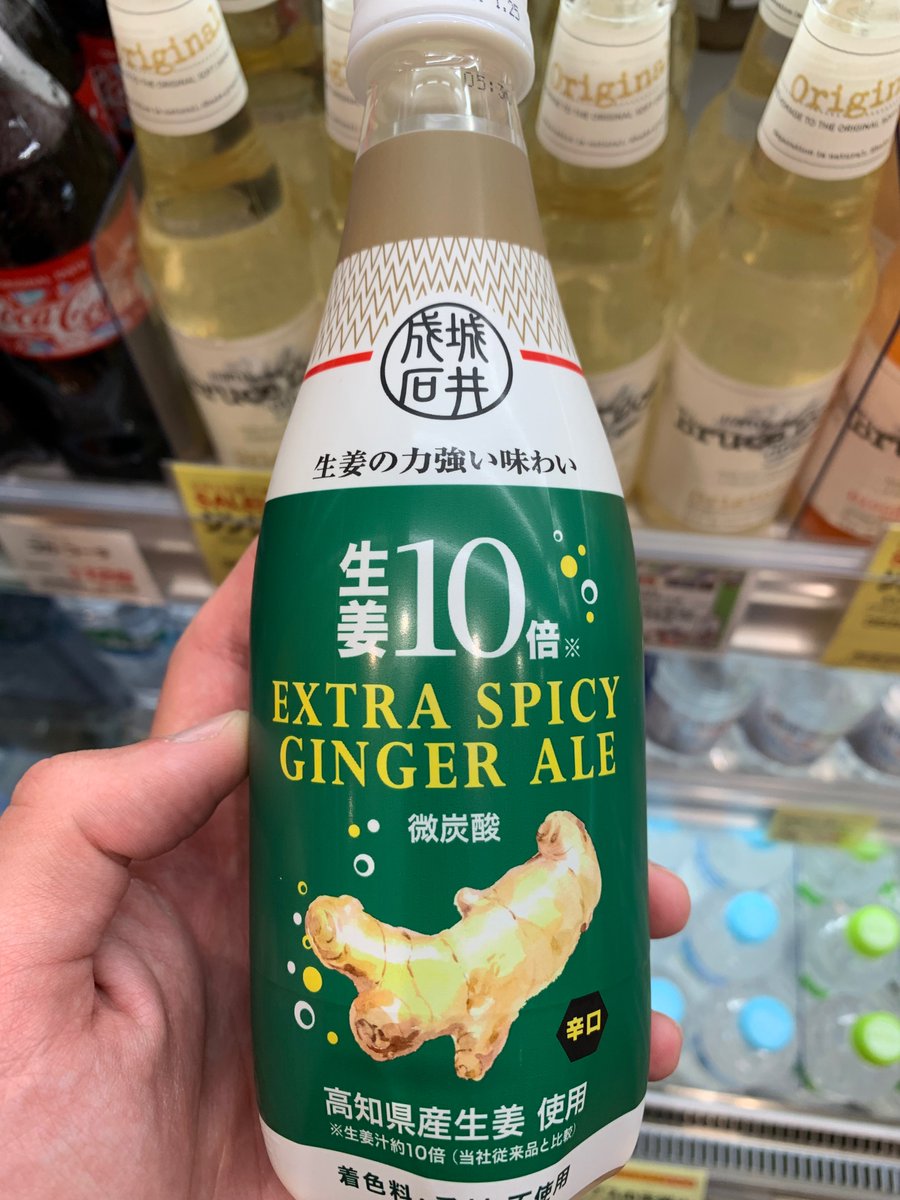

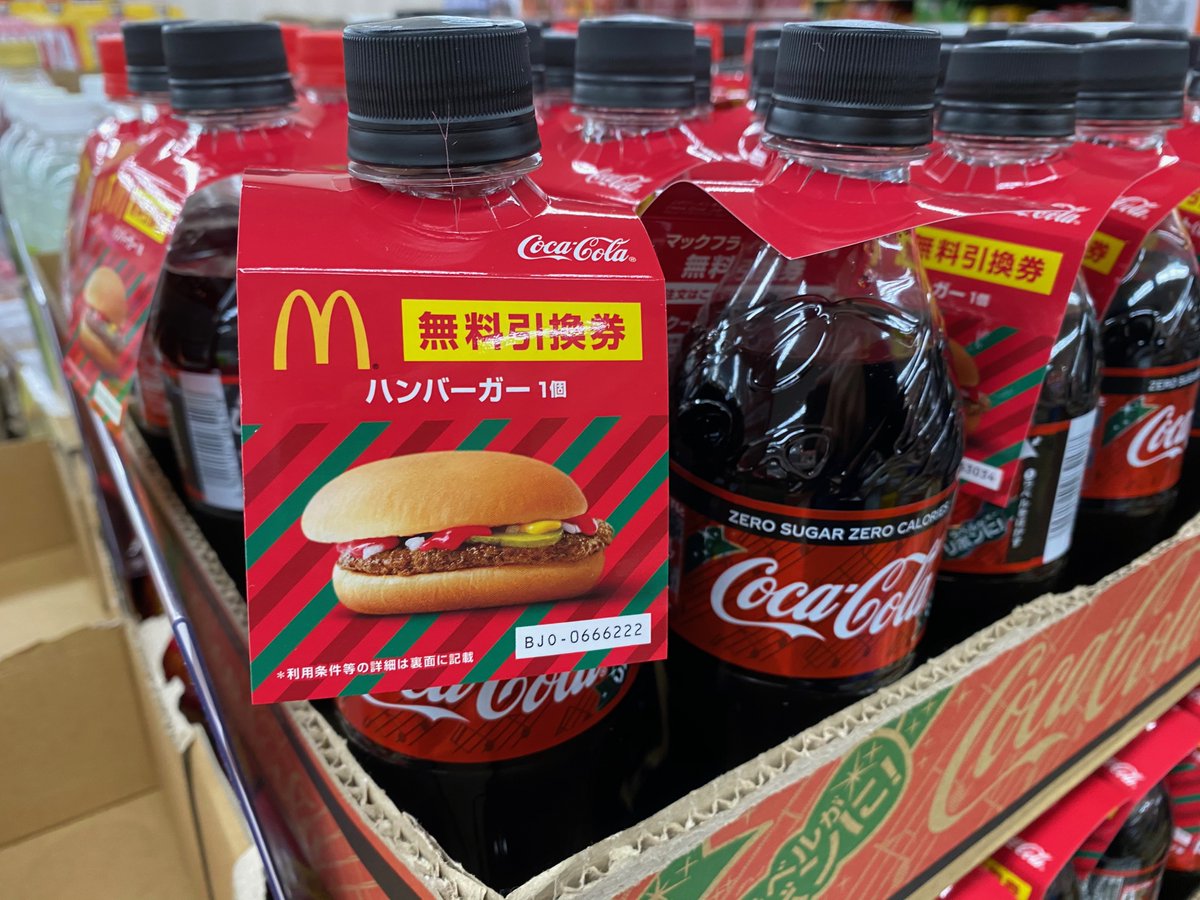
Speaking of seasonality, it's not summer until it's suika (watermelon) season. You can find a watermelon-flavored-anything in July 





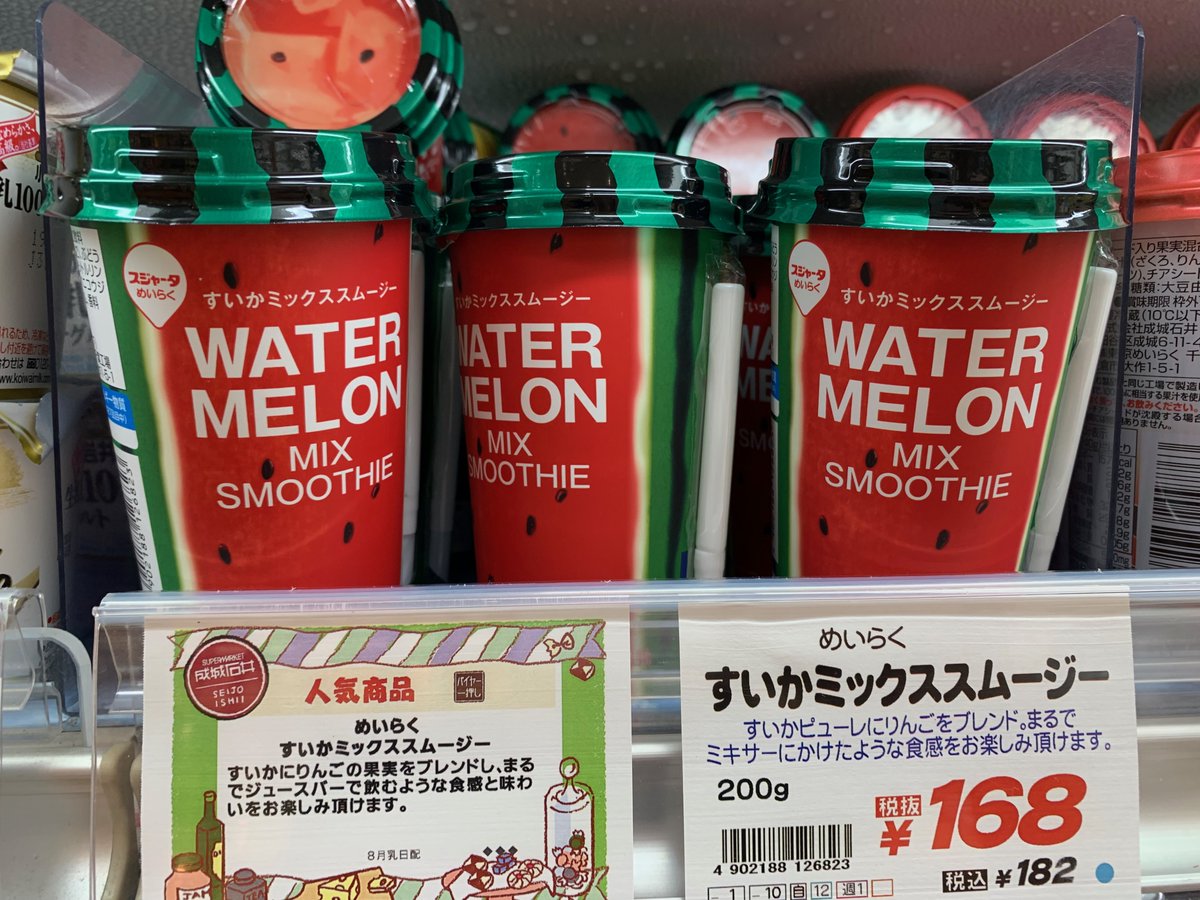
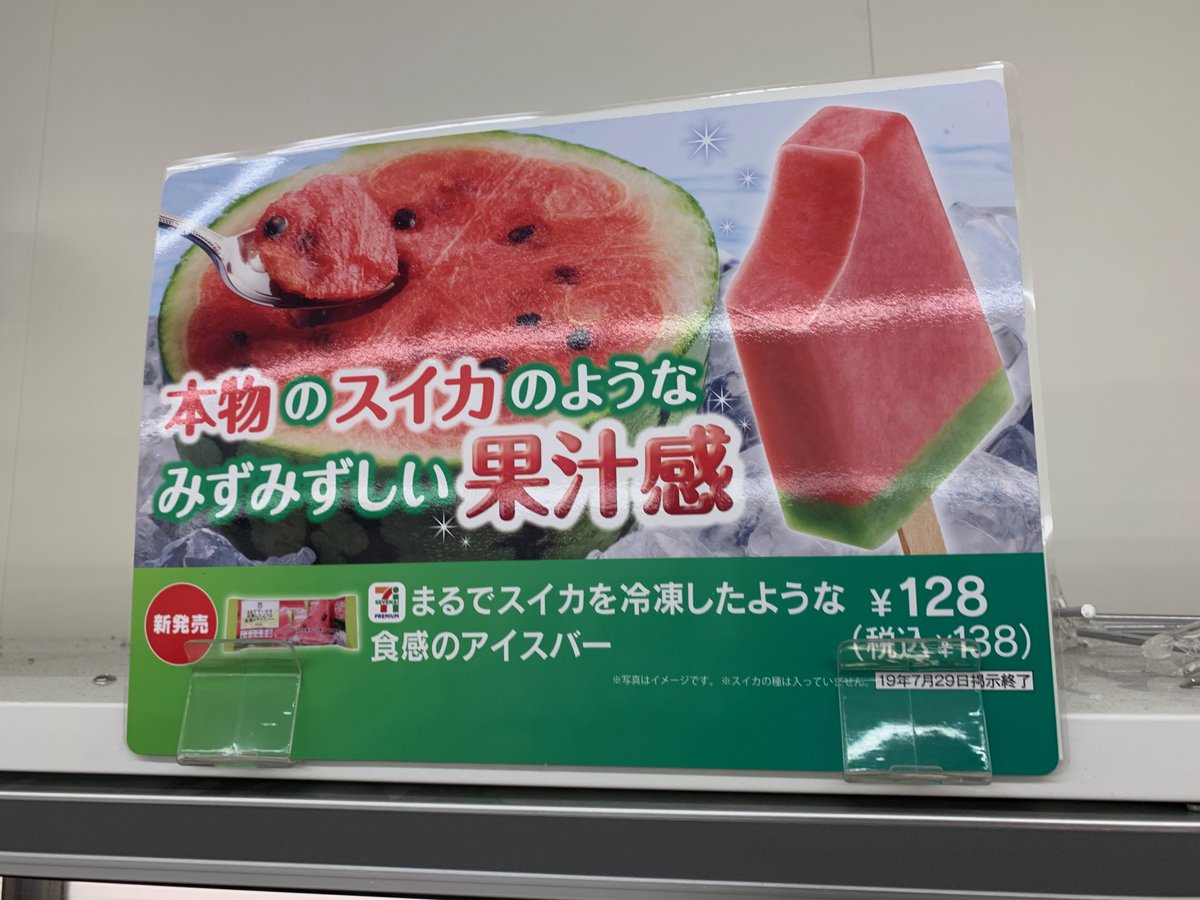
Thankfully, fried food never goes out of season. Karaage fried chicken is always great (with or without sauce), and everything is delicious as tempura (even shiso leaves). Hard to beat a tempura-fried half-boiled egg, though. Still confused how the hell that one works 




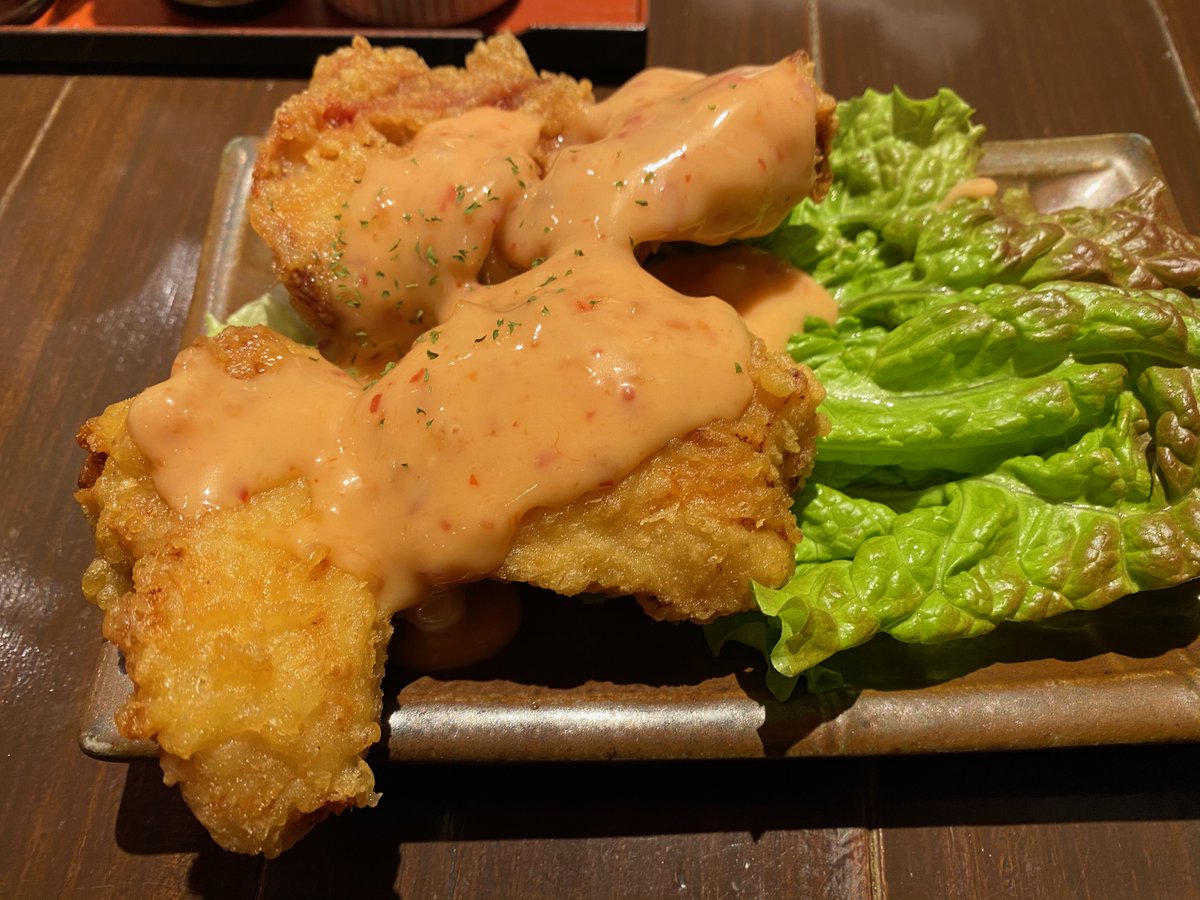
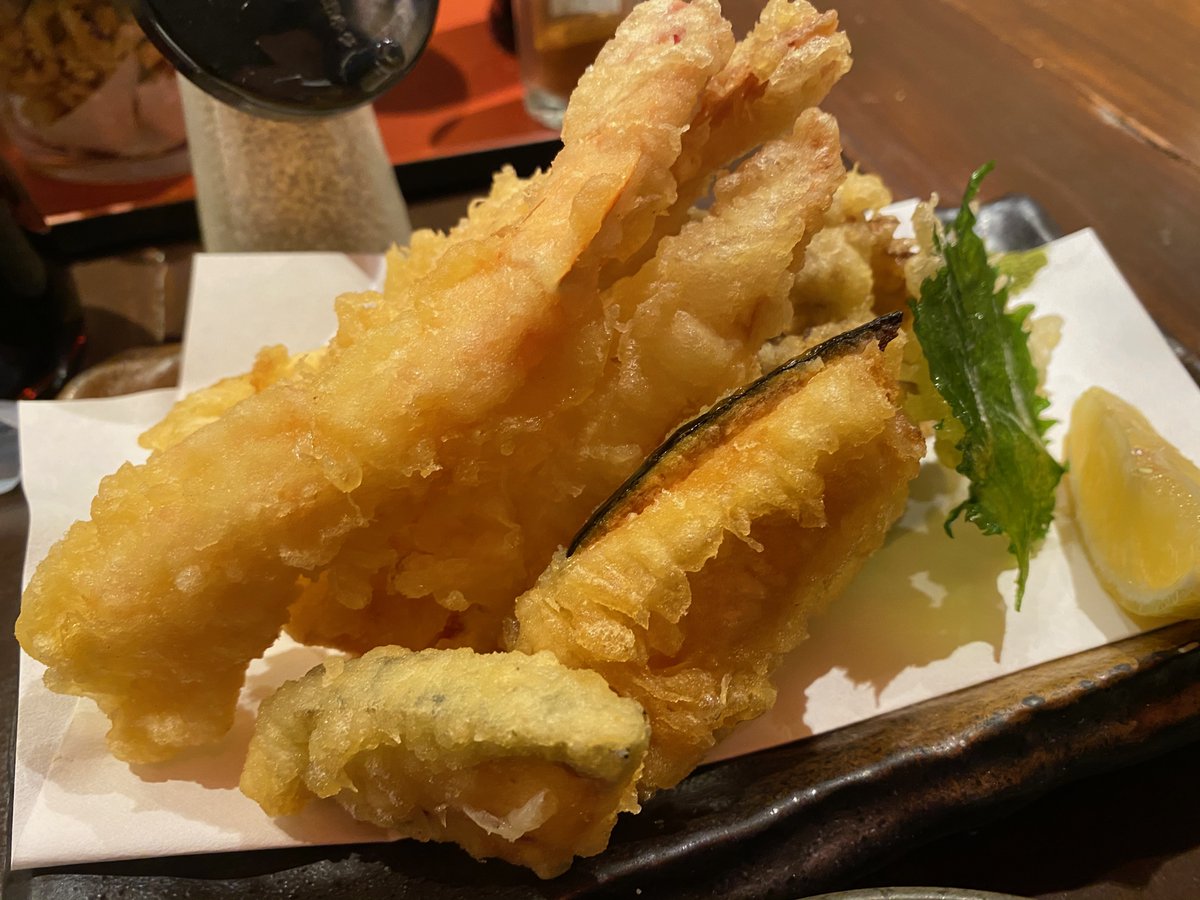

I could have done an entire thread on just steak pics, so I'll try to constrain myself. Hands down, my favorite kind of Japanese beef is Matsusaka (then Ohmi, then Kobe). This A5 ribeye was from a western-style steak restaurant in Matsusaka, replete with the cow's ID card 





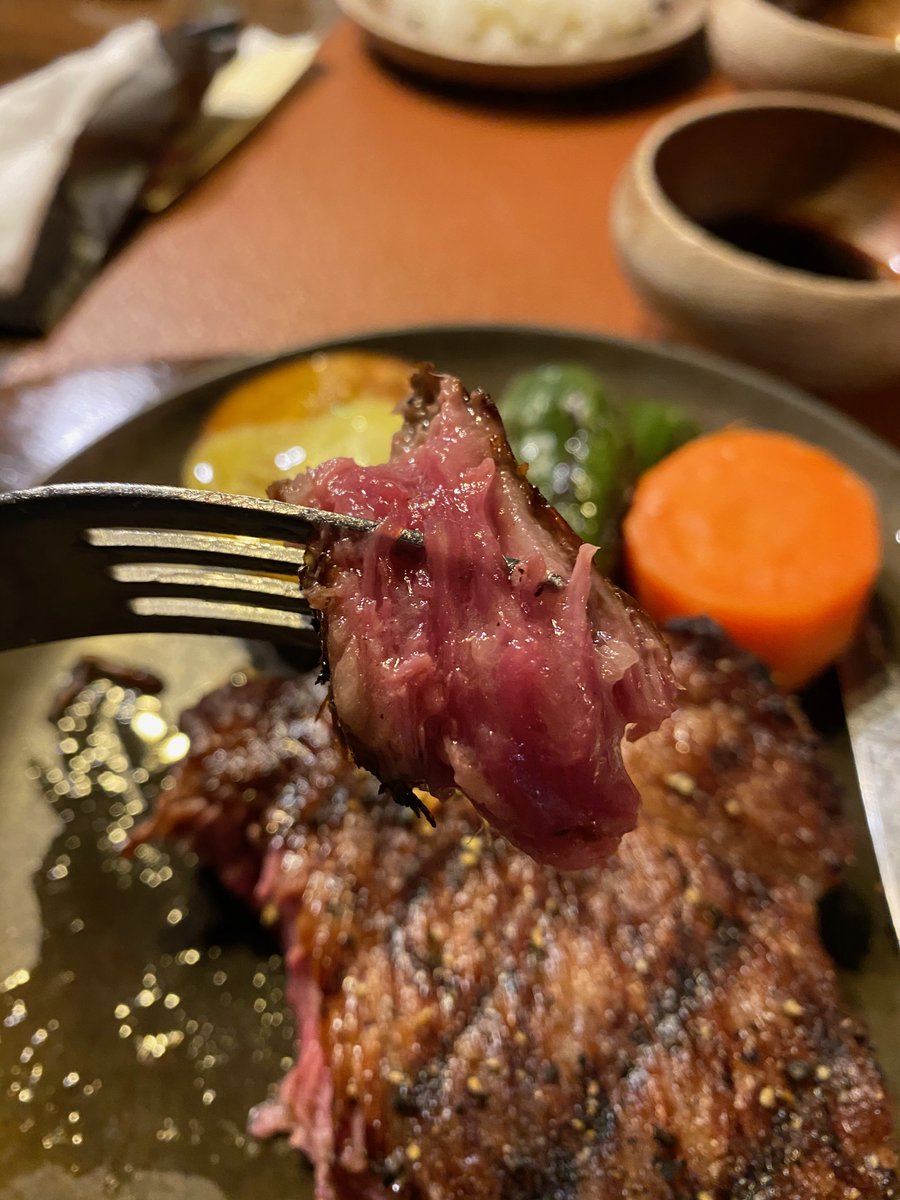

But most steak is purchased in thin pre-cut slices to be eaten right off the grill. Whether it's prime Matsusaka-gyuu or from a grocery store (love that plastic lettuce garnish; little touches) 




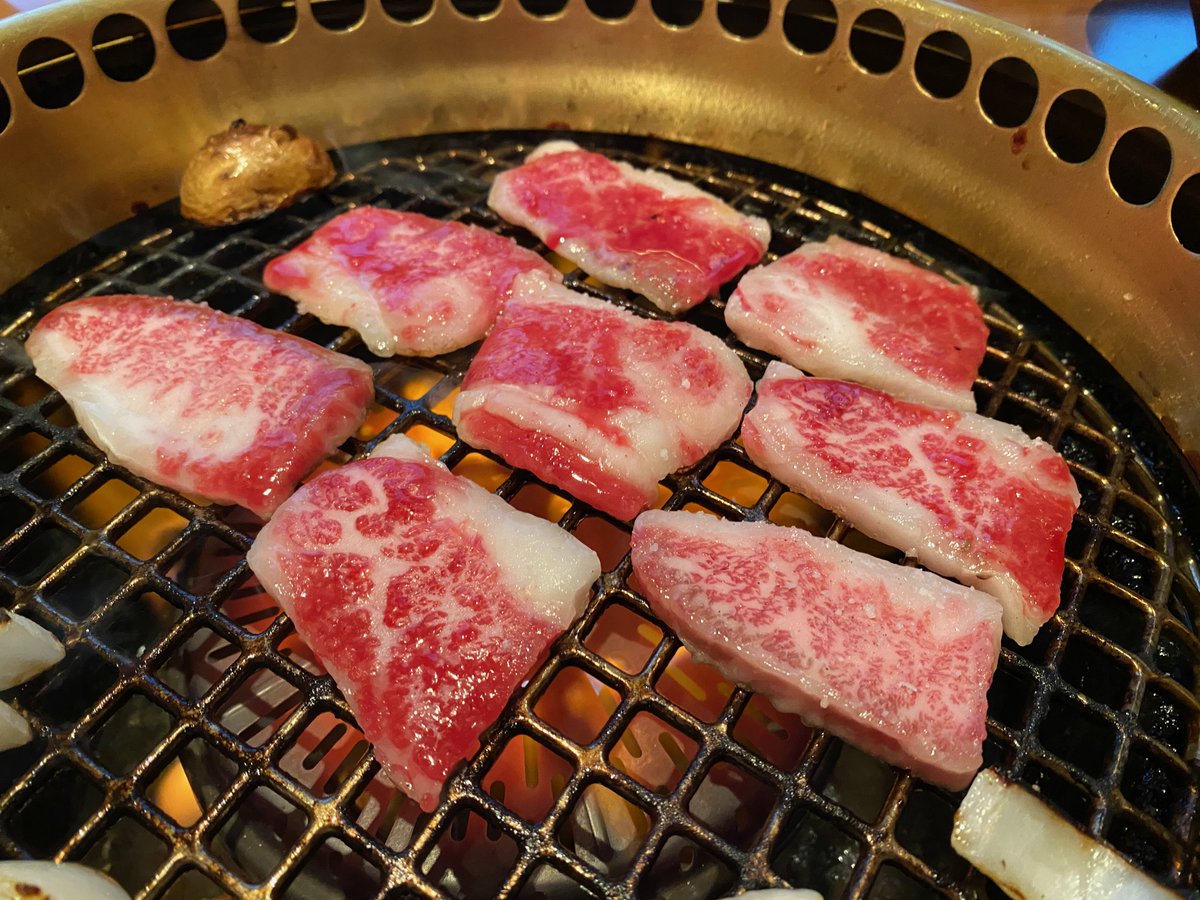
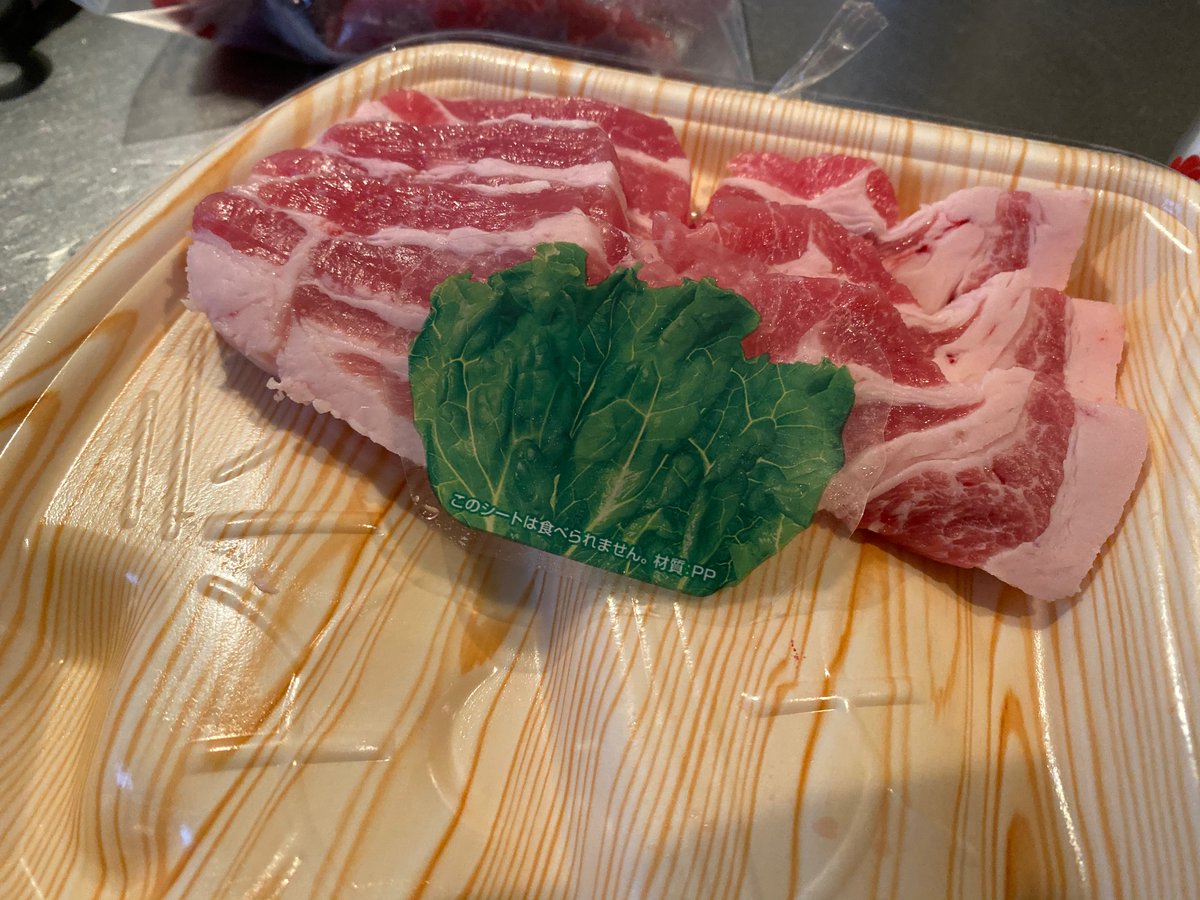
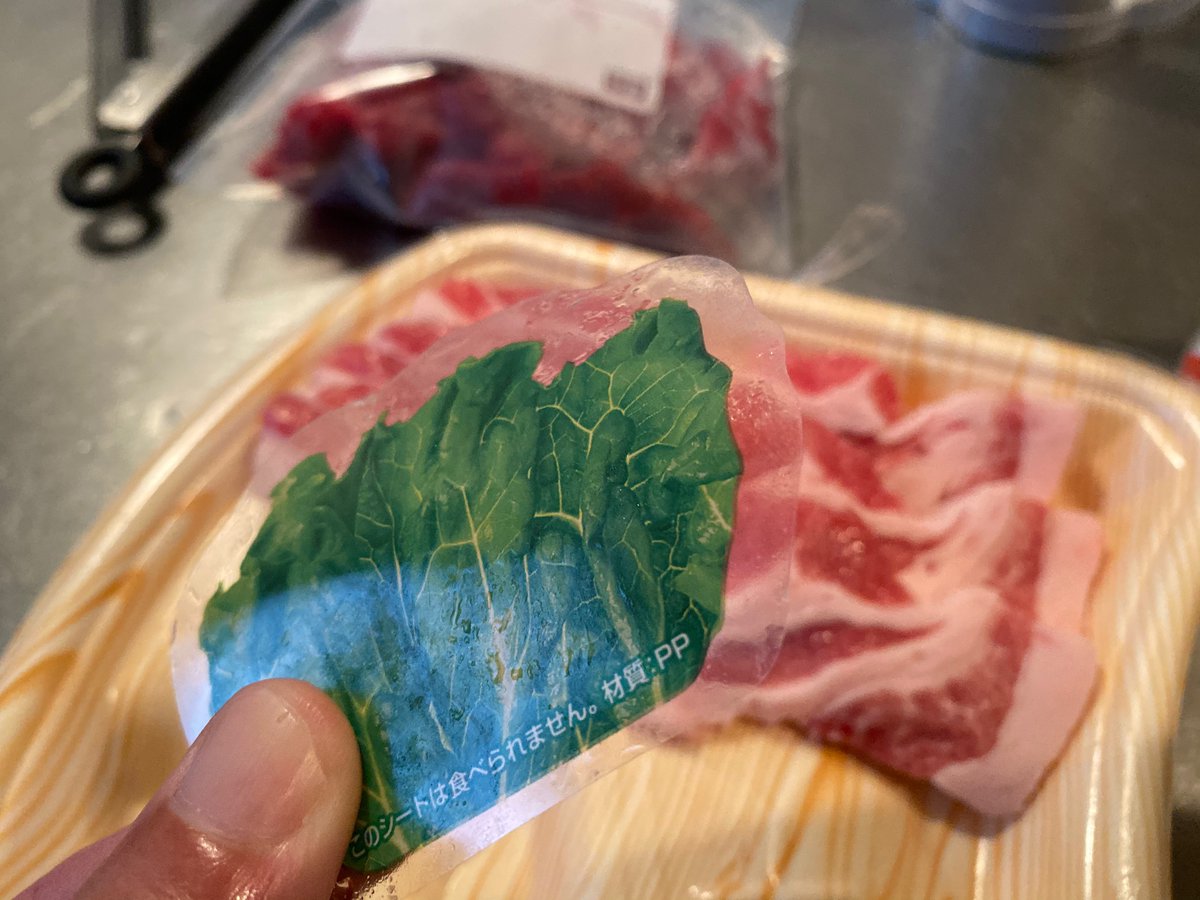
Ok, last steak pic I swear: in cities famous for a particular food you can always find over-the-top novelty souvenirs. Hindsight being 2020, I really wish I'd bought these steak towels 
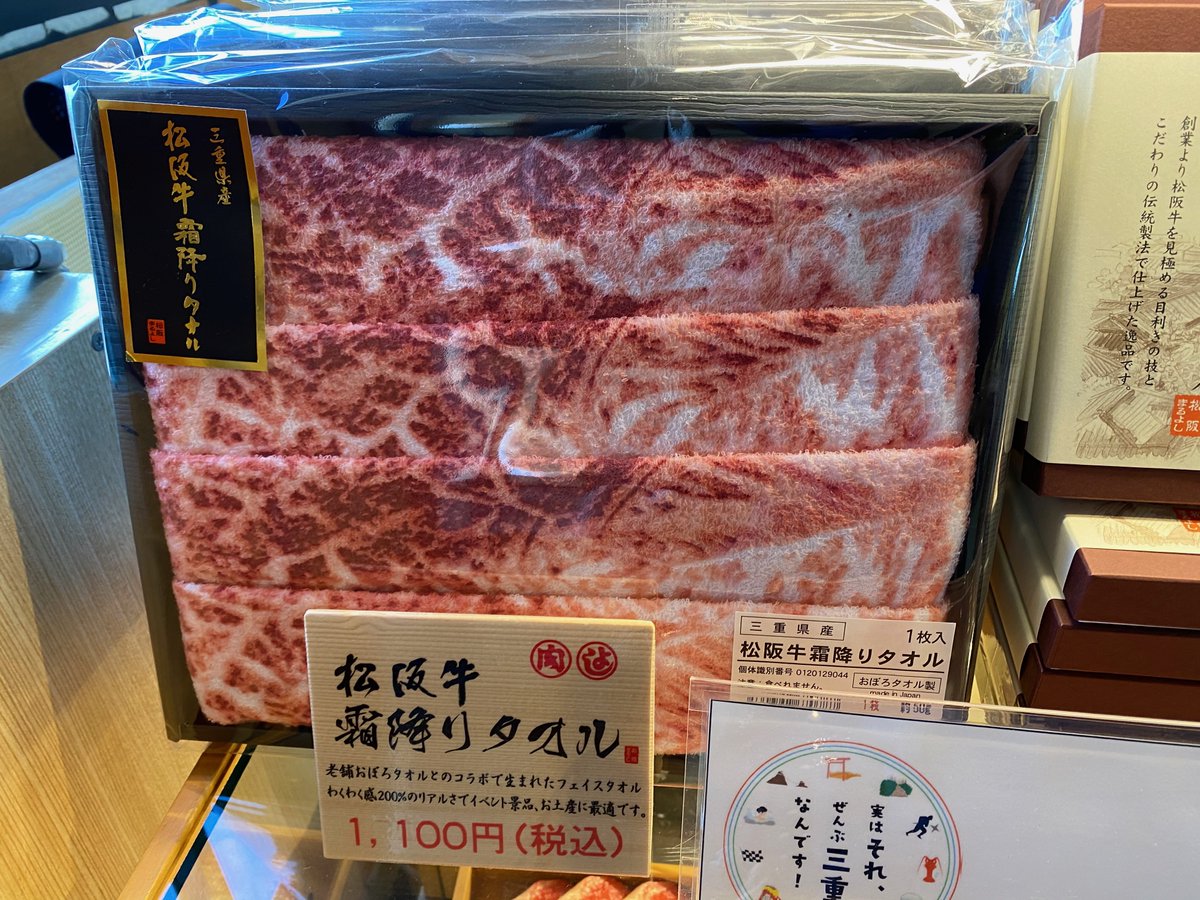
But that's not to say that over-the-top meat novelties in Japan are never edible! For some reason I kept finding in-bone hot dogs this year.
But seriously, who's bone is that?

But seriously, who's bone is that?
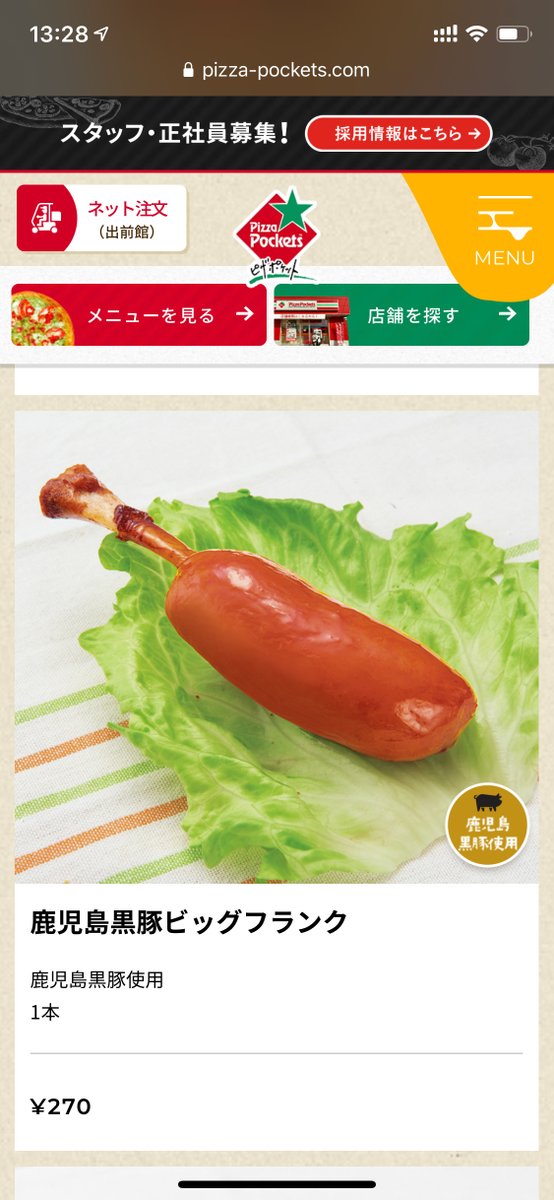

Japanese gummy innovation is still several years ahead of the rest of the world. From chewing gum that tastes like spicy cola, to more probiotic yogurt drink flavored gummies, to gummies that taste like kakigori shaved ice, to copiously-detailed little pineapples for 40¢ a bag 



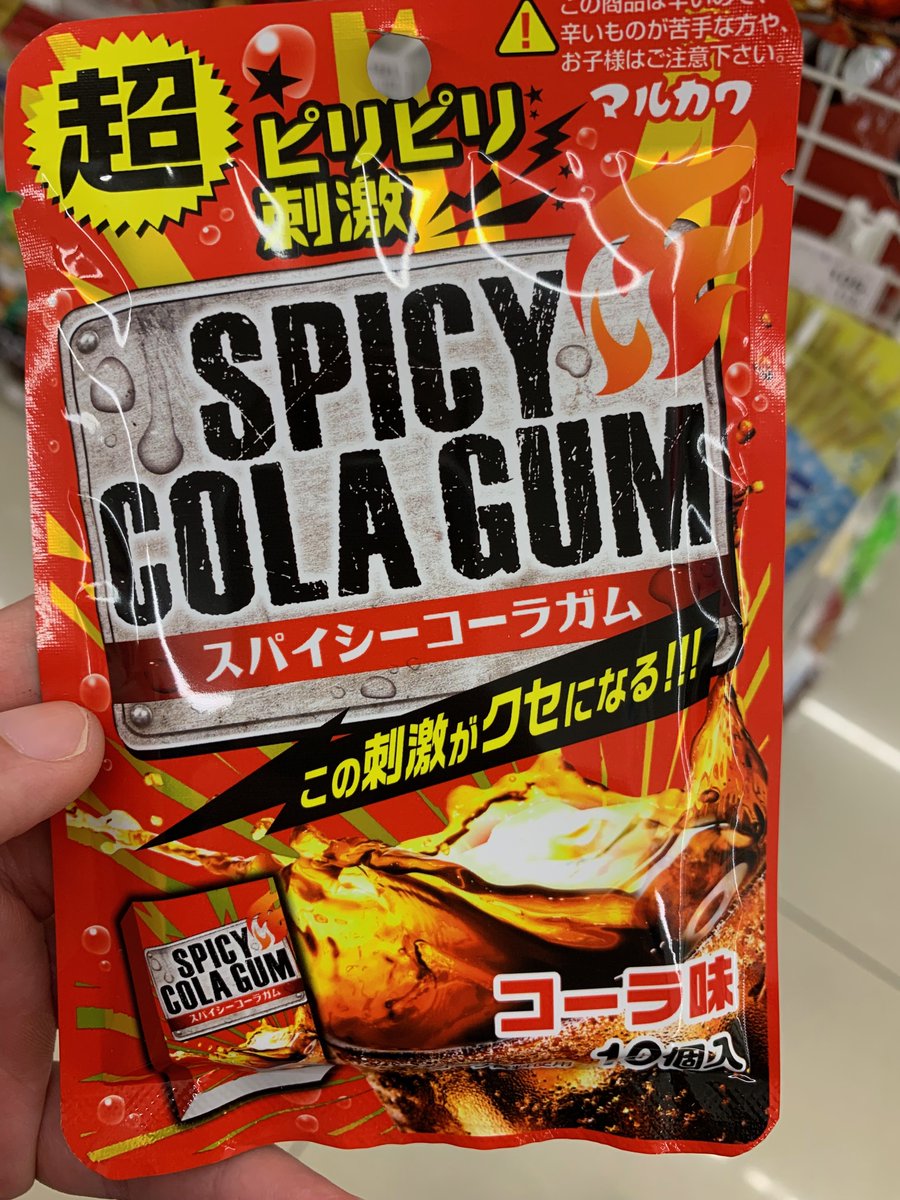
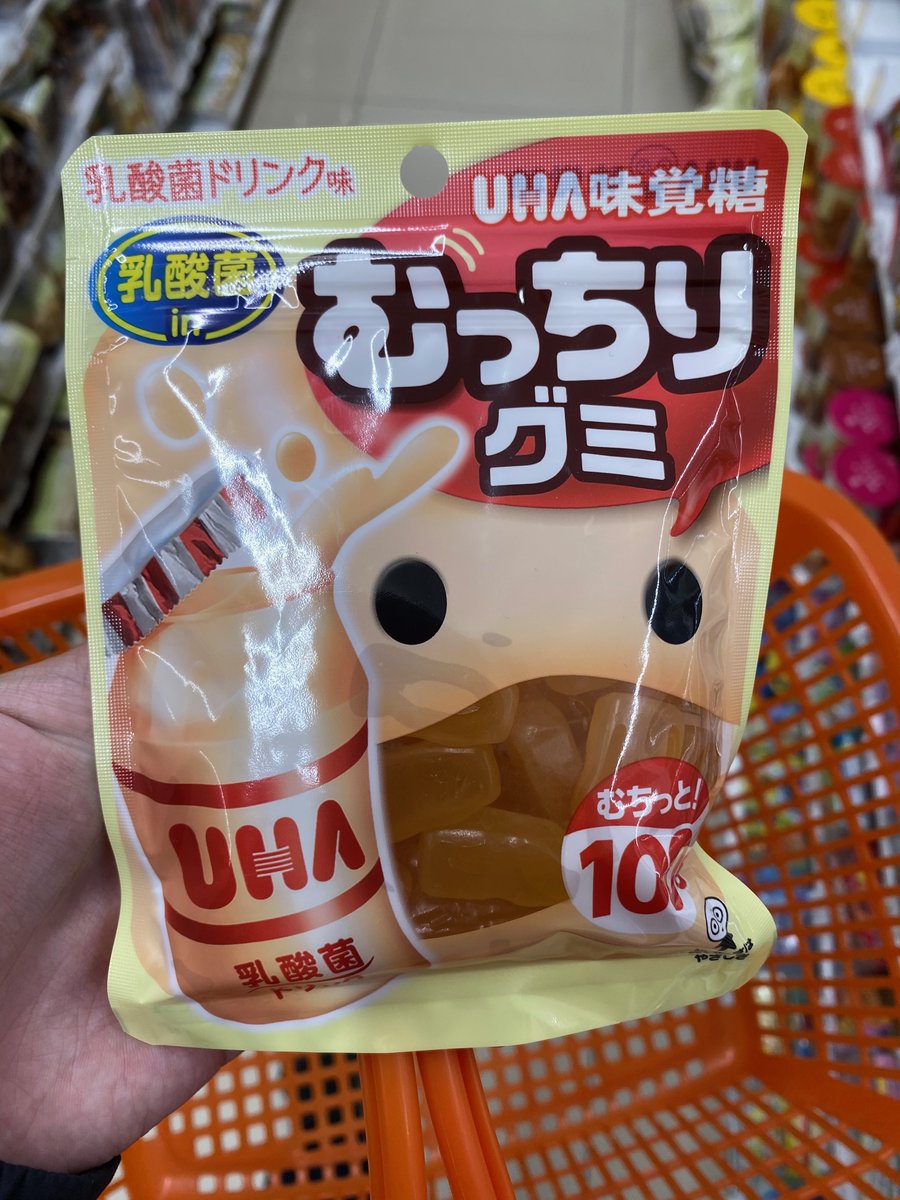


In fact, the efforts of Japanese junk food companies to make things taste like other things is generally laudable. Whether it's white chocolate to taste like both cheddar and cheesecake, wasabi beef potato chips, white chocolate corn, or a milkshake that tastes like soybeans 



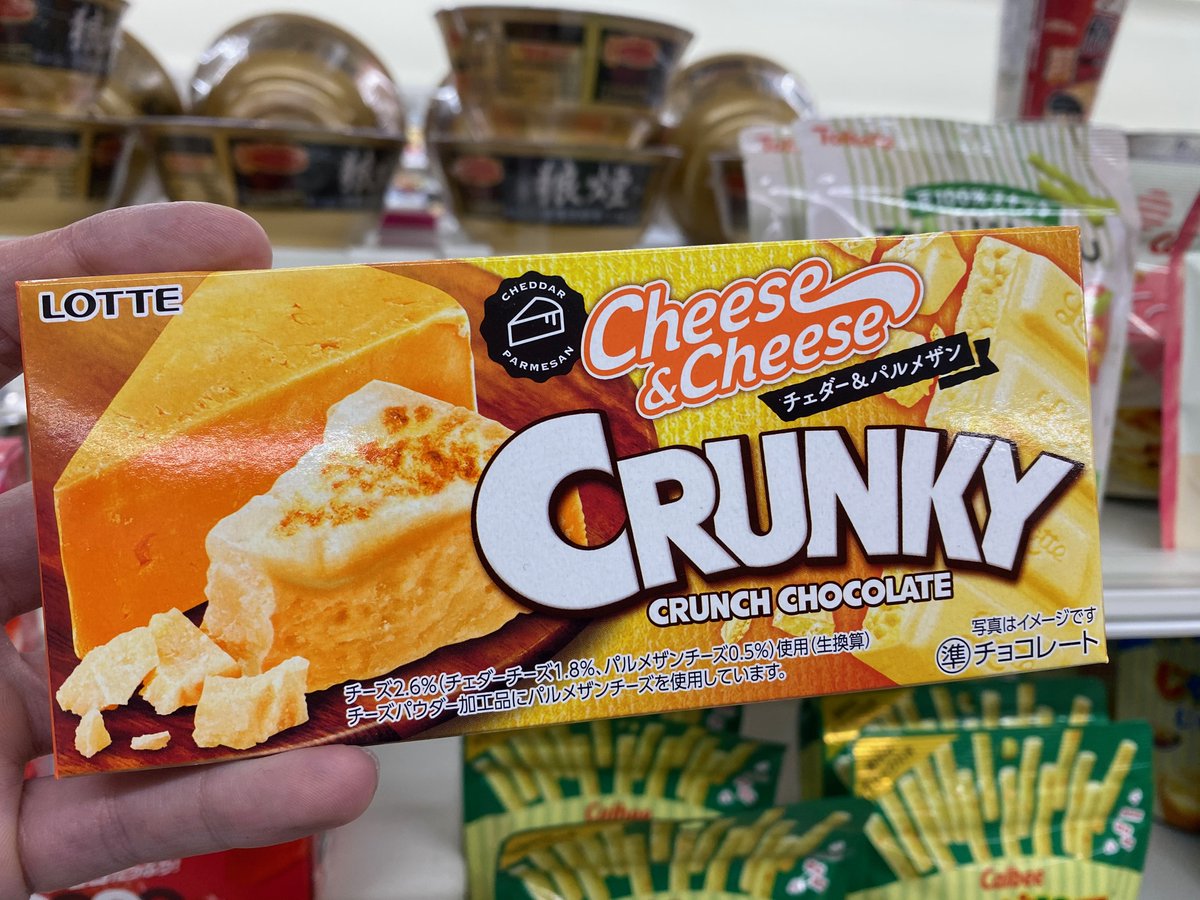
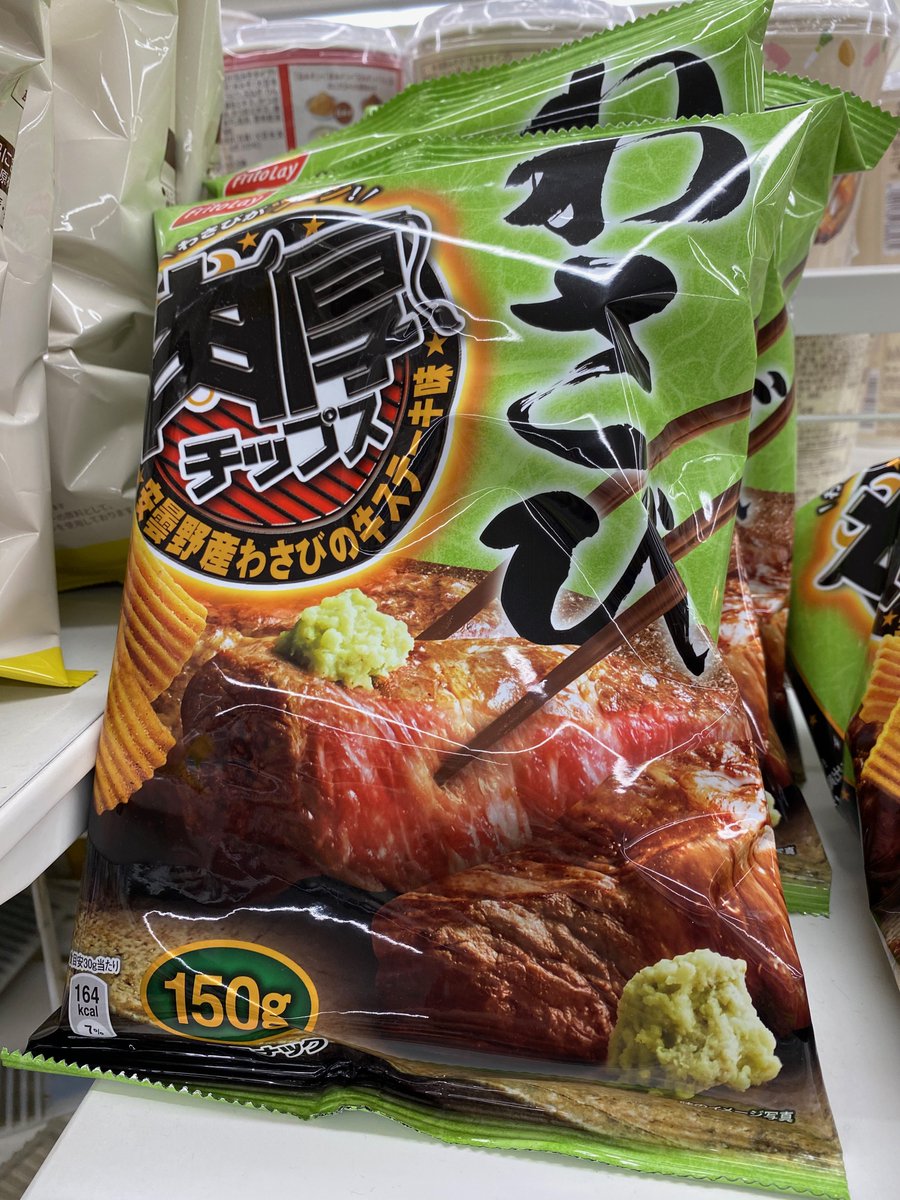
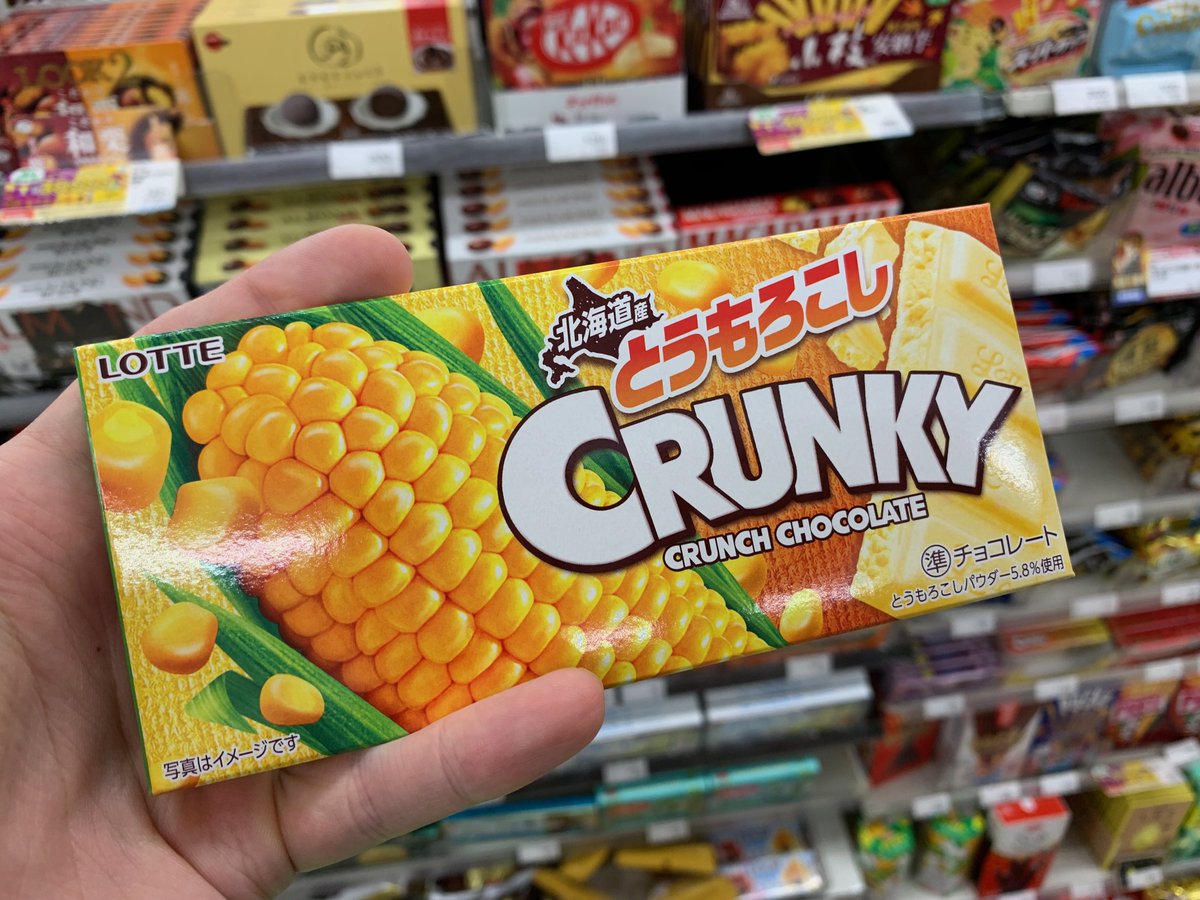
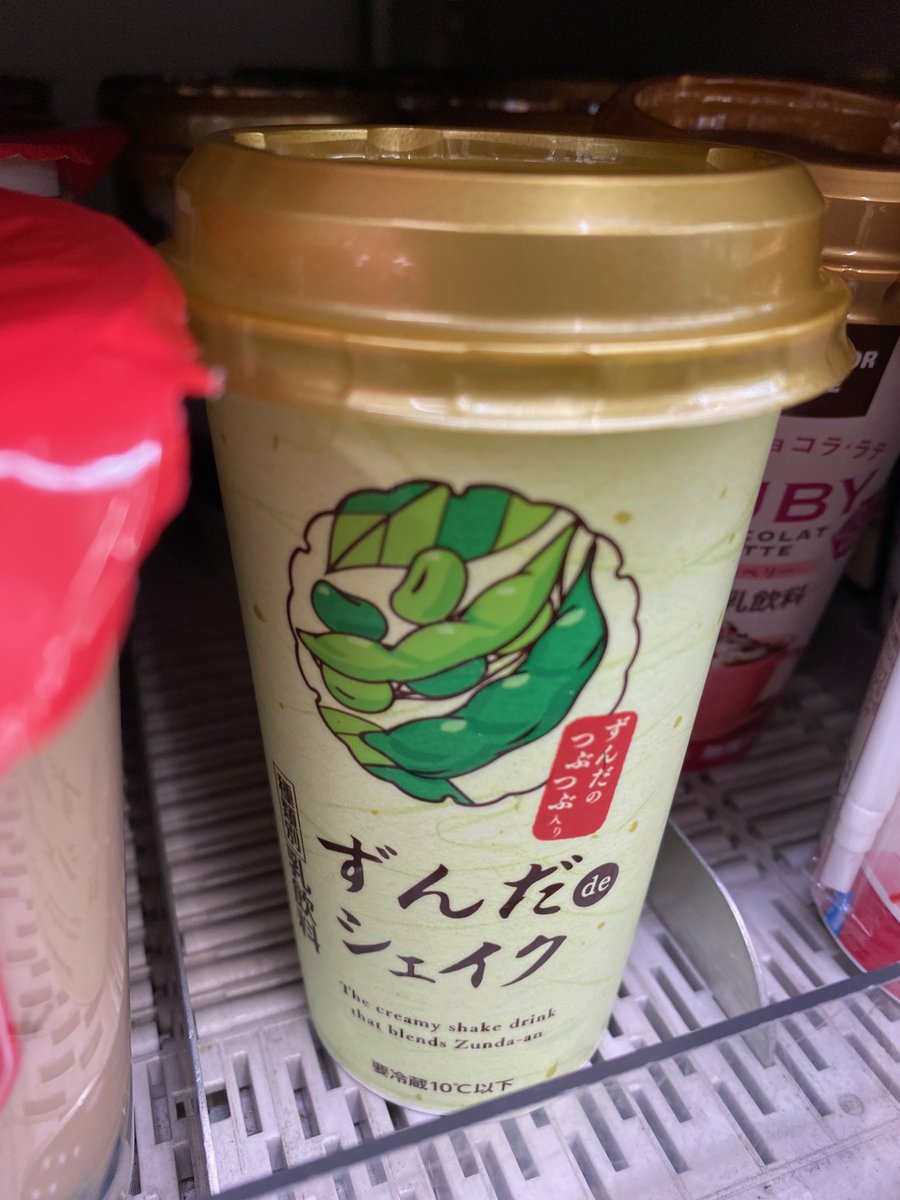
For the record, you can buy real food at Japanese convenience stores, too. Like this vacuum-sealed, perfectly coiffed cob of corn.
(I bought it for scientific purposes and it was not nearly as good as the corn-flavored Crunky, though)
(I bought it for scientific purposes and it was not nearly as good as the corn-flavored Crunky, though)

My go-to "real food" at a convenience store is onigiri (rice balls wrapped in nori seaweed). This one is tuna mayo, but labelled "sea chicken" which is, humorously, a canned tuna brand name in Japan just like Chicken of the Sea® is in the US. 

Ise-ebi (shrimp from Ise prefecture) is known as Japanese lobster, and that's really not far off the mark, especially if you're in it for the tail meat. Whether served up as sashimi, steamed, grilled, or served as a novelty flavor of kaki no tane rice crackers 





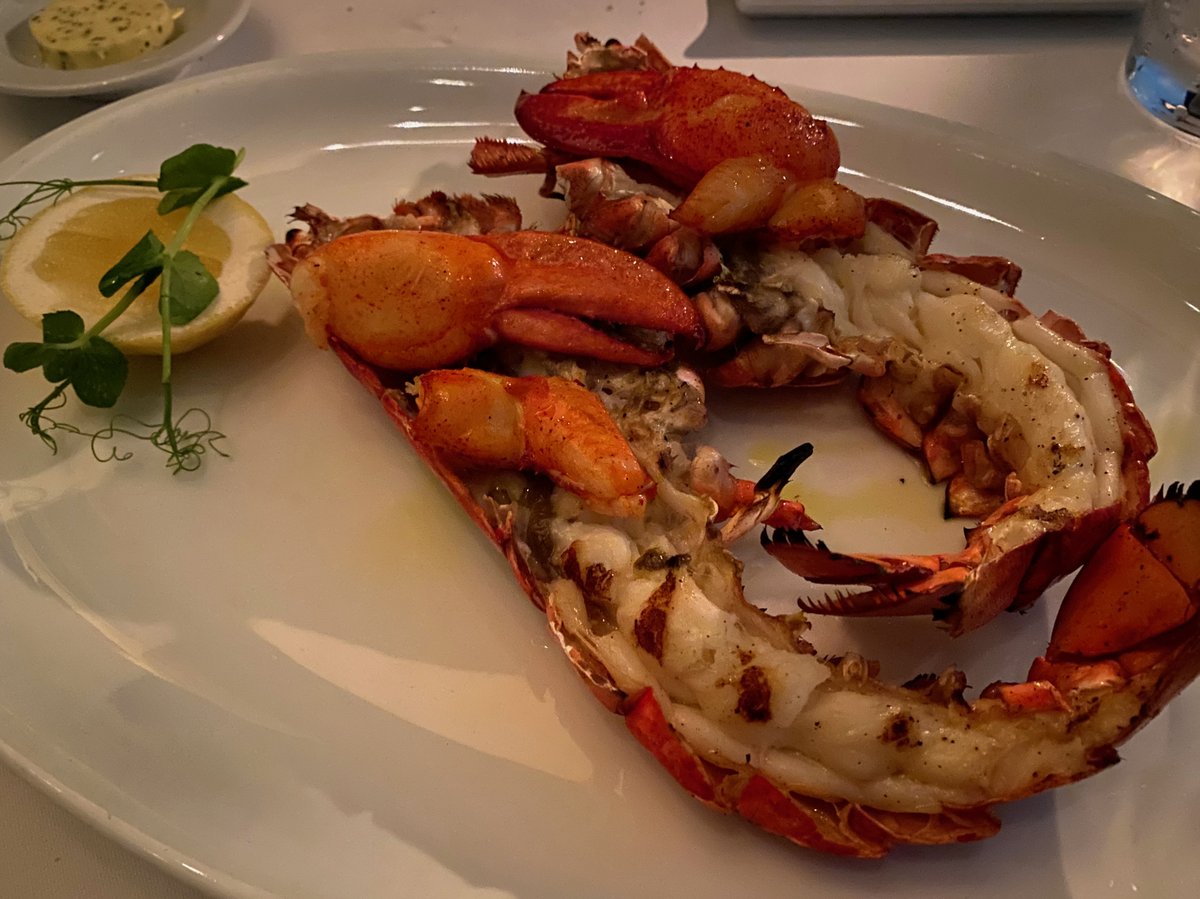

I somehow made it that far without touching on sushi, but—and I don't know if you've heard—fresh seafood in Japan is pretty good. Whether it's a fatty tuna nigiri, an entire fish carved up right in front of you and hoisted on sticks, lightly grilled, or a whole box of surprises 







Of course, if you're a traditionalist there's also cheeseburger and fried chicken sushi rolls at most reputable establishments 



Japanese beer is best served so cold that you can't really taste it, and the most important characteristic (as far as I can tell) is nailing the ratio of bubbles-to-liquid as you pour.
This pack of The Premium Malts even came with a pump to foam up the head! (I brought it home.)

This pack of The Premium Malts even came with a pump to foam up the head! (I brought it home.)


I really miss the creativity of Japanese fast food, too. Whether it's the chili and beefsteak tomatoes of an iconic Mos Burger, Wendy's very-keto Wild Rock that smashes an egg between two meat patties, or a McDonald's gohan burger that subs out bread for grilled rice patties 





After fast food it's back to the convenience store. You've probably seen all the silly KitKat flavors in Japan, but have you seen Coffee Affogato KitKat balls? Or Pino chocolate mint ice cream bites that claim to be ASMR-ful? Or Canadian maple syrup pancake flavored mochi ice? 





One thing the Family Mart conbini chain has been doing for a few years now is repurposing their self-service coffee machines to prep "frappes", where you pick an ice cream flavor like cheesecake or banana and then top it with hot milk so it melts together into a warm milkshake 





I've yet to see an ice cream float in a convenience store, though so you'll have to settle for a humble frozen cola squeeze pouch. Never do the Coca-Cola one, though, the melting point is way off. Leave it to the professionals and always go with the cola-flavored Coolish. 



And when your convenience store's ice cream selection lets you down, there's always the neighborhood Baskin Robbins (only known as "thirty one" in Japan) ice cream vending machine 

There's a certain "what you see is what you get" quality to Japanese desserts that's hard not to appreciate. This soft serve with a fresh honeycomb and waffle was exactly as advertised. 



Or this parfait that @tenderlove ordered at our local cafe that looked better than the picture somehow. 

Of course, the king of all cafe confections has been and continues to be the decadent and complicated Japanese pancake. I didn't realize what I was getting into when I ordered this triple berry pancake—I had no idea it'd have a pint of berry ice cream hidden under the whip cream 
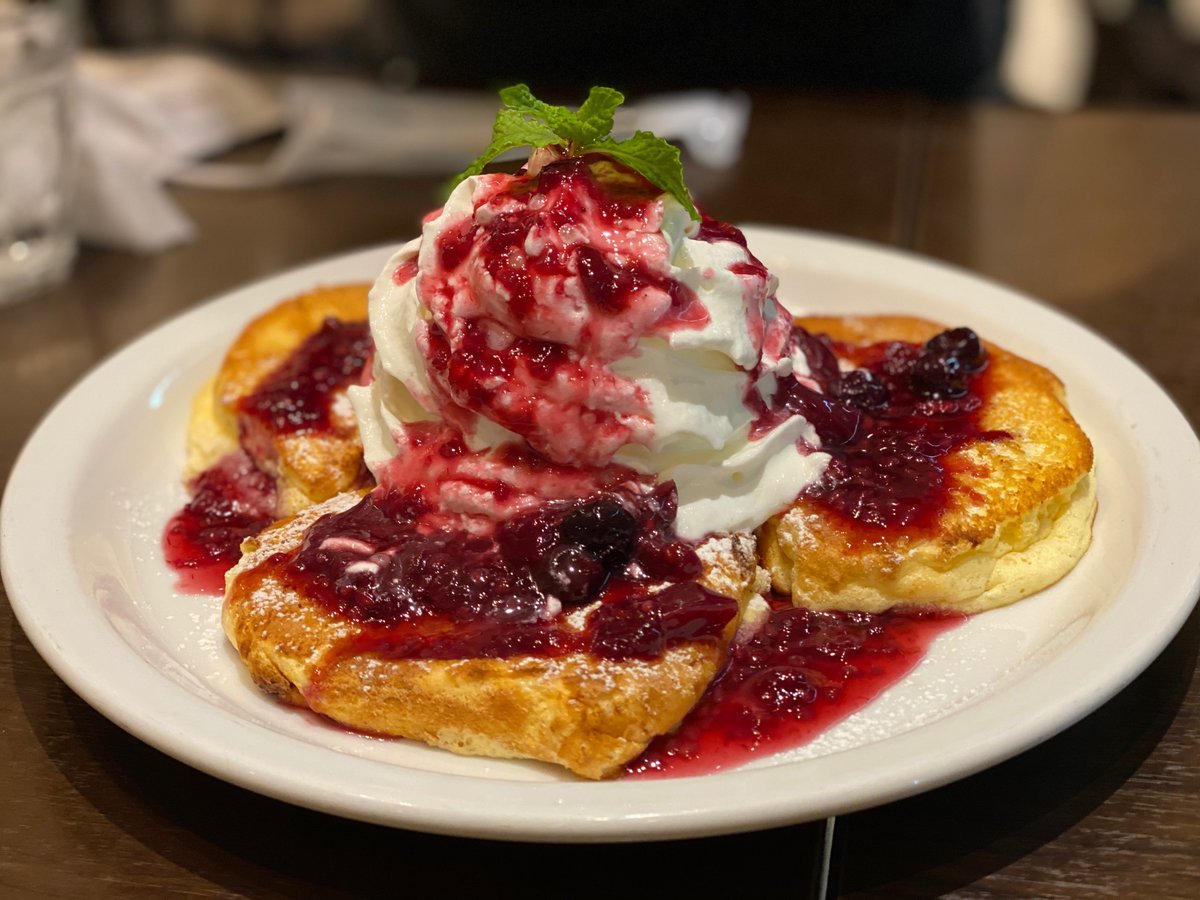
Probably the single most impressive treat we ordered all year was this matcha latte with a 3D cat on top. I was convinced it was 3D printed somehow until we actually saw the barista spend five minutes carefully crafting the foam by hand. And yet, somehow, still served hot. 🍵😸 

That seems like a good place to wrap things.
Knowing you're going to live in a place for exactly a year puts a healthy pressure on getting the most out of every day, it turns out! It confused all our neighbors, but I really was eating and drinking like I was running out of time.
Knowing you're going to live in a place for exactly a year puts a healthy pressure on getting the most out of every day, it turns out! It confused all our neighbors, but I really was eating and drinking like I was running out of time.
• • •
Missing some Tweet in this thread? You can try to
force a refresh

